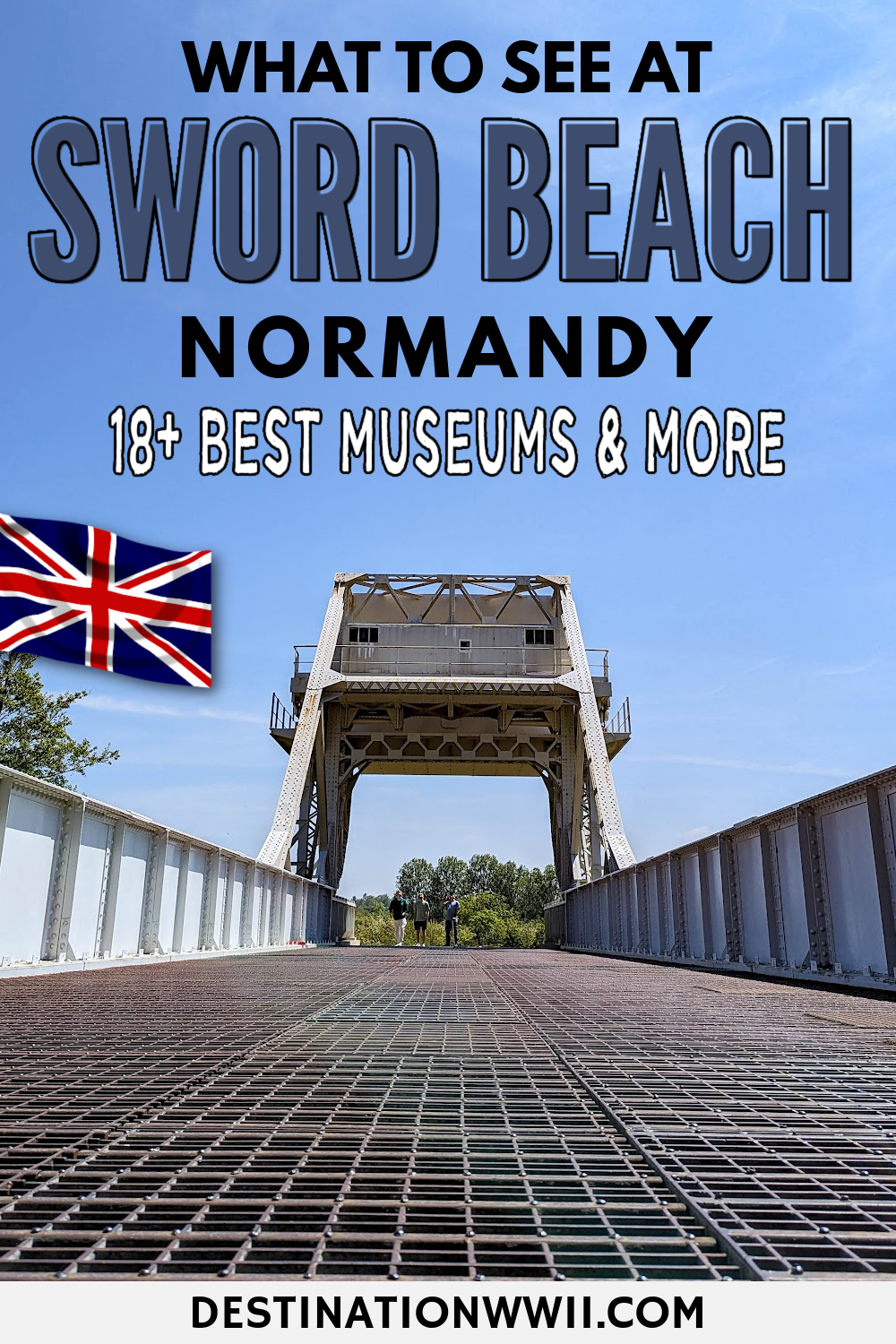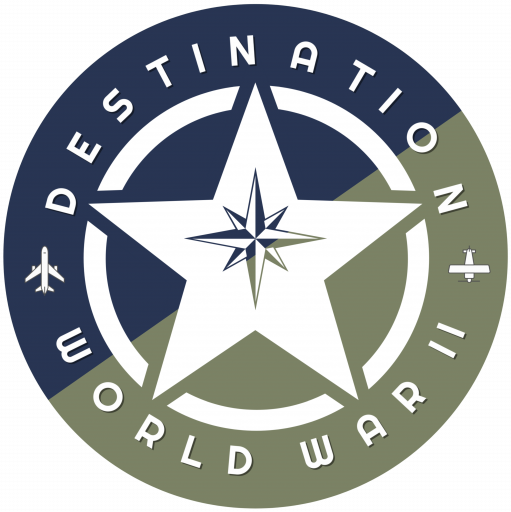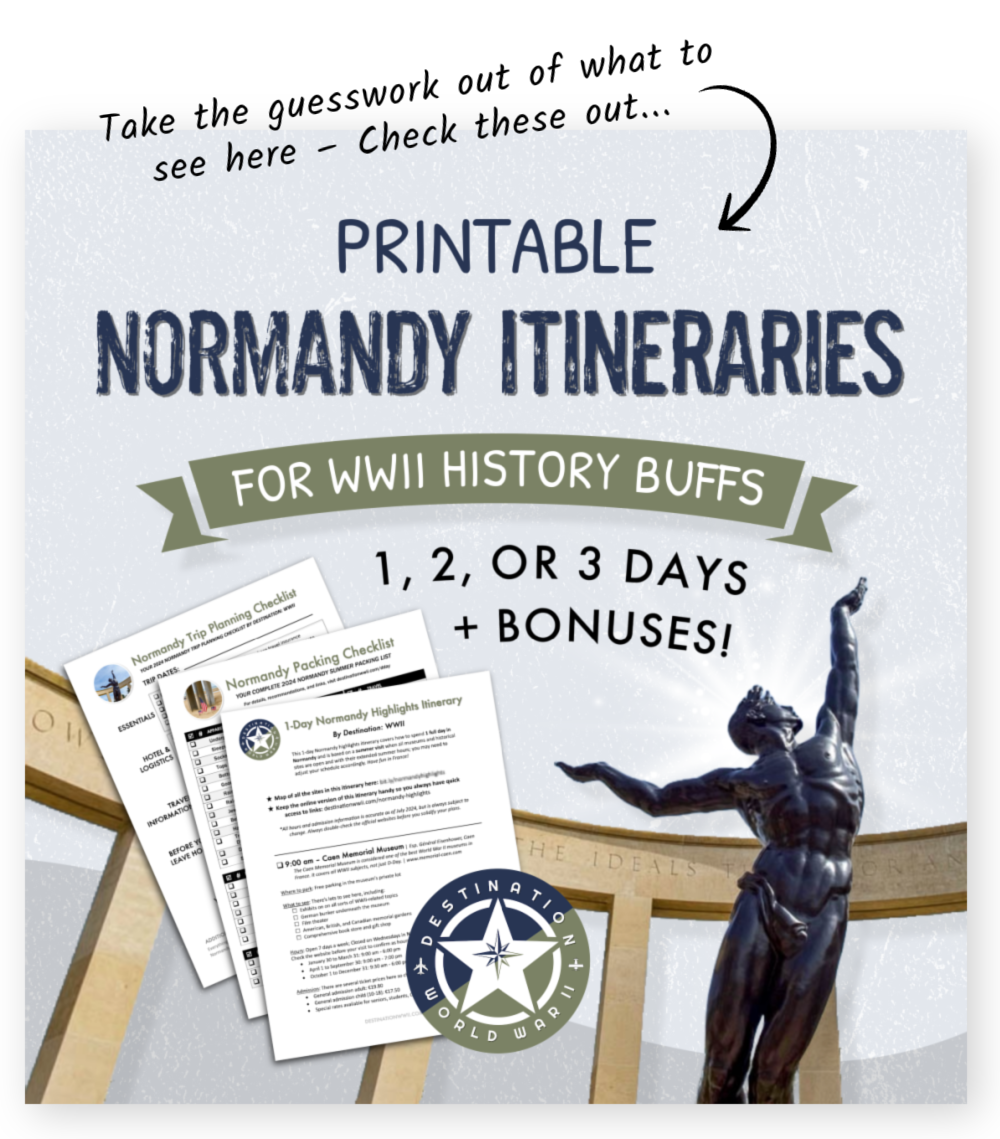When deciding what to see at Sword Beach in Normandy, know that there are some really cool sites in this particular D-Day landing sector. Sword beach is the easternmost of the five Normandy landing beaches and, along with Gold beach to the west, was a British landing zone.
Like the other four beach sectors, Sword Beach offers a great selection of museums and other historic sites you can visit today. Find them all in this post!
Don’t miss my posts on everything to see in the other four D-Day landing zones: Utah Beach, Omaha Beach, Gold Beach, and Juno Beach.
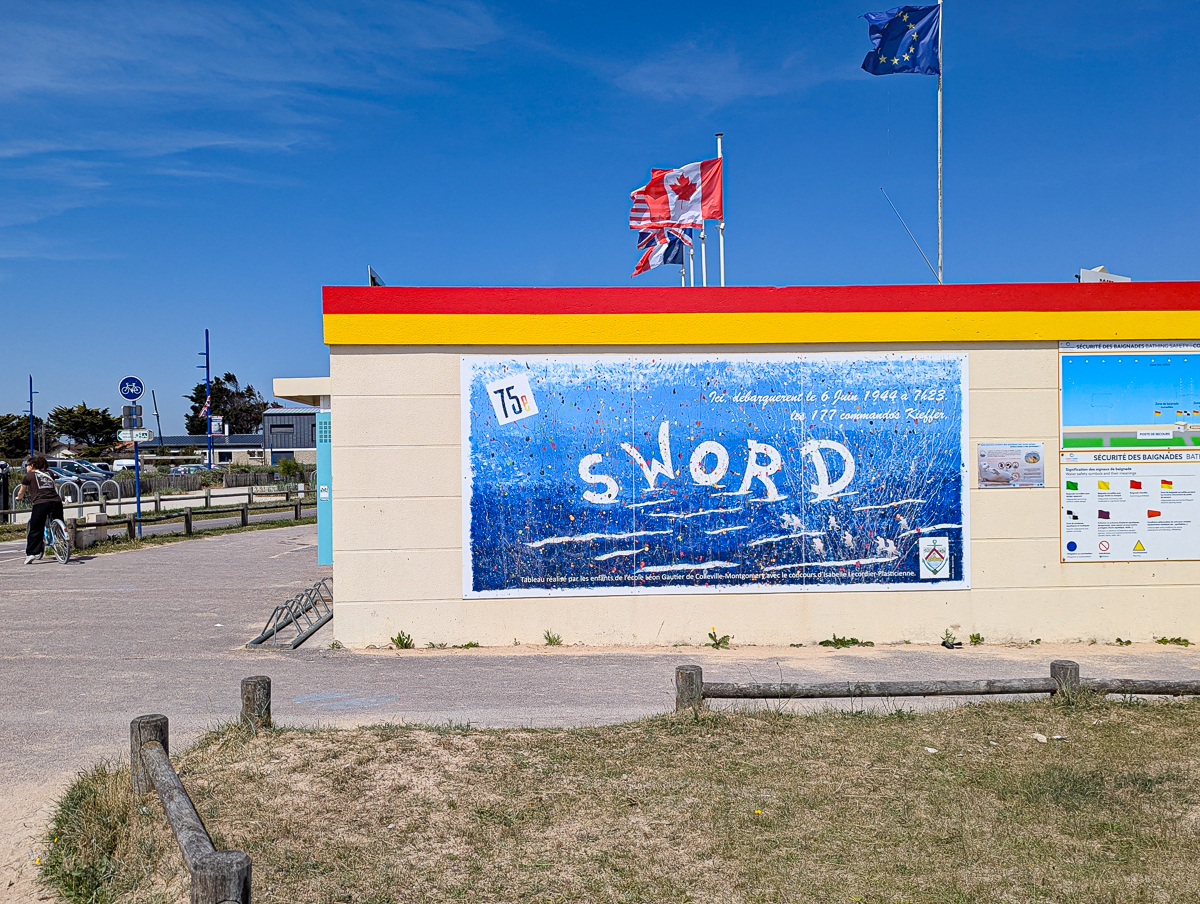
D-Day at Sword Beach: What happened?
At 7:25 am on June 6th, 1944, British forces landed on Sword Beach and faced only moderate opposition. Just half an hour later the fighting had already moved inland. Here’s a quick rundown of what happened at Sword Beach on D-Day:
Sword Beach objective: The main British objective on D-Day was to capture the city of Caen. Caen is the largest city in the area and the one through which all major roads in the Normandy countryside run.
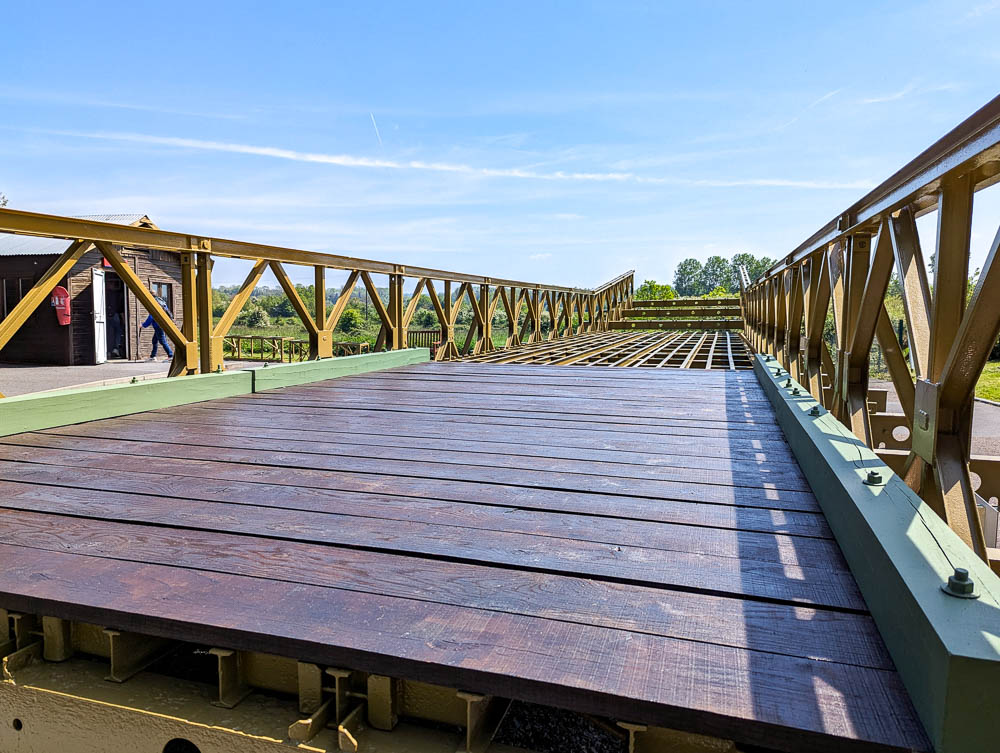
Sword Beach units: The landing at Sword Beach was led by the British 3rd Infantry Division, under the command of Major General Tom Rennie. Assisting them were:
- 27th Independent Armoured Brigade
- 1st Special Service Brigade (including the Free French Commandos)
- No.41 Royal Marine Commando of the 4th Special Service Brigade
- 79th Armoured Division
Sword Beach casualties: Of the almost 29,000 troops that landed on Sword Beach, there were 683 casualties—a relatively low number as far as Normandy beach landings went.
Sword Beach outcome: The storming of Sword Beach on D-Day resulted in a super swift Allied victory with relatively few casualties.
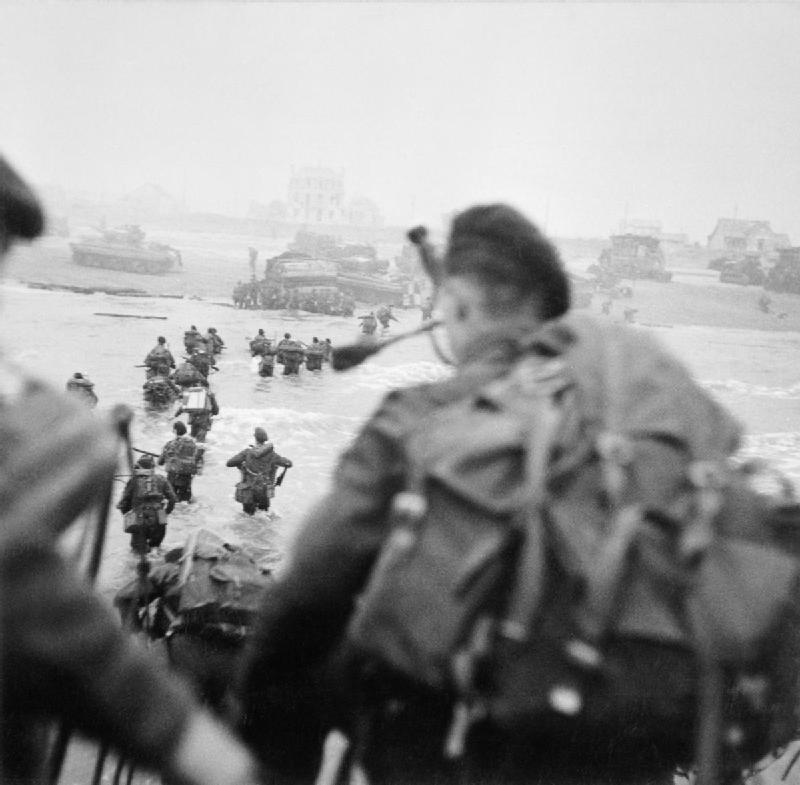
Also read: 20+ Fascinating WWII Sites in Paris – museums, memorials, and more
What to see at Sword Beach
Along with Gold Beach to the west, Sword Beach was a British landing sector. As a result, most of the D-Day sites you’ll visit in and around Sword Beach focus on the heroism of the British landing forces. On your next visit to Normandy, be sure to check out these incredible sites.
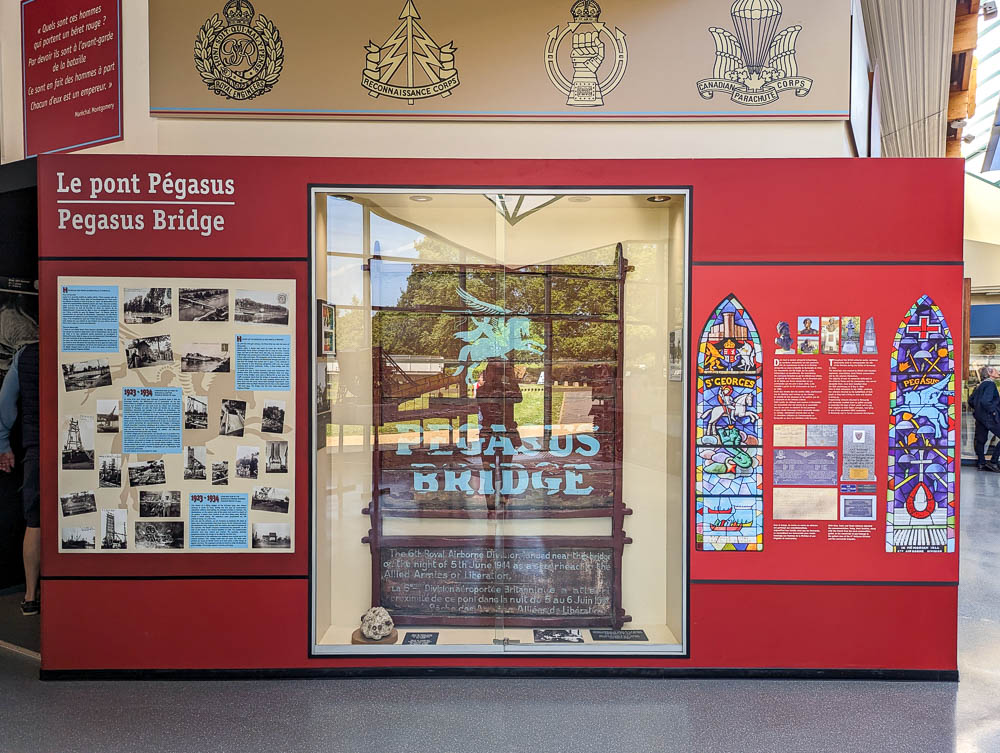
Also check out: The Best D-Day Beach to Visit in Normandy: Here’s How to Choose
What to see at Sword Beach: Map
This map contains all the Sword Beach sites mentioned in this post. To save this map: Click on the star ⭑ next to the map’s title to save in your Google Maps. To use this map: When you get to Normandy, open Google Maps on your phone, click “Saved” at the bottom, then click “Maps.”
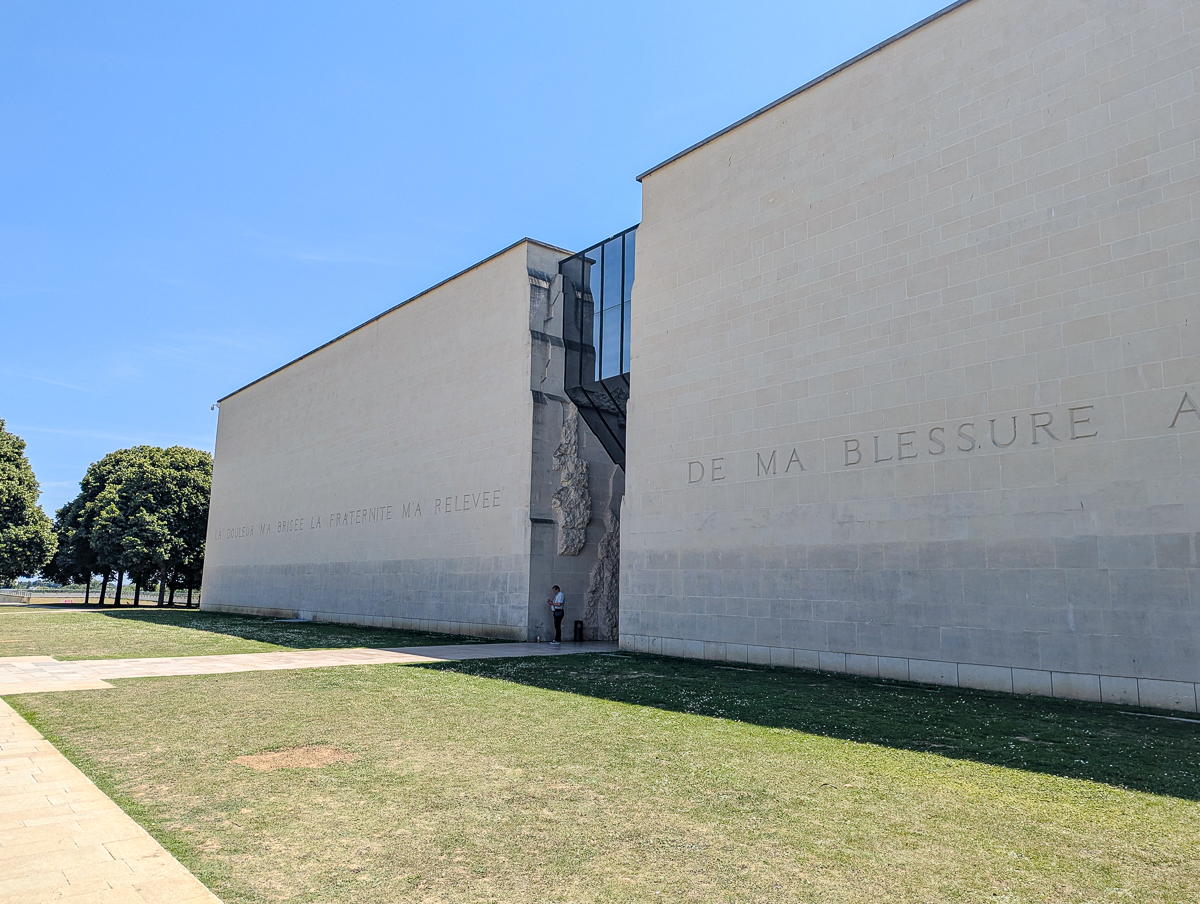
1. Mémorial de Caen (Caen Memorial Museum)
Located in the city of Caen, the main Sword Beach objective on D-Day, you’ll find the Caen Memorial Museum, believed to be the best World War II museum in Europe. This museum opened on D-Day in 1988 and covers what happened on Sword Beach, on D-Day overall, and throughout World War II in general.
This museum displays tons of historical artifacts, replicas, airplanes, vehicles, and much more. It also has two cafés, an extensive shop, three gardens dedicated to British, Canadian, and American soldiers who died in Normandy, and a film theater.
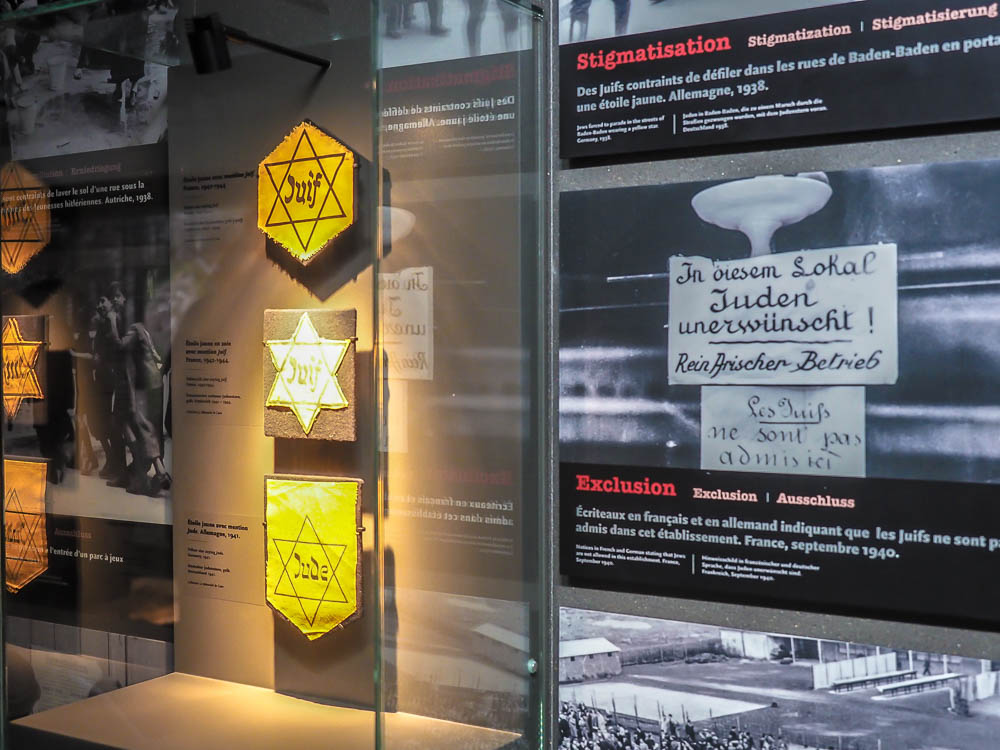
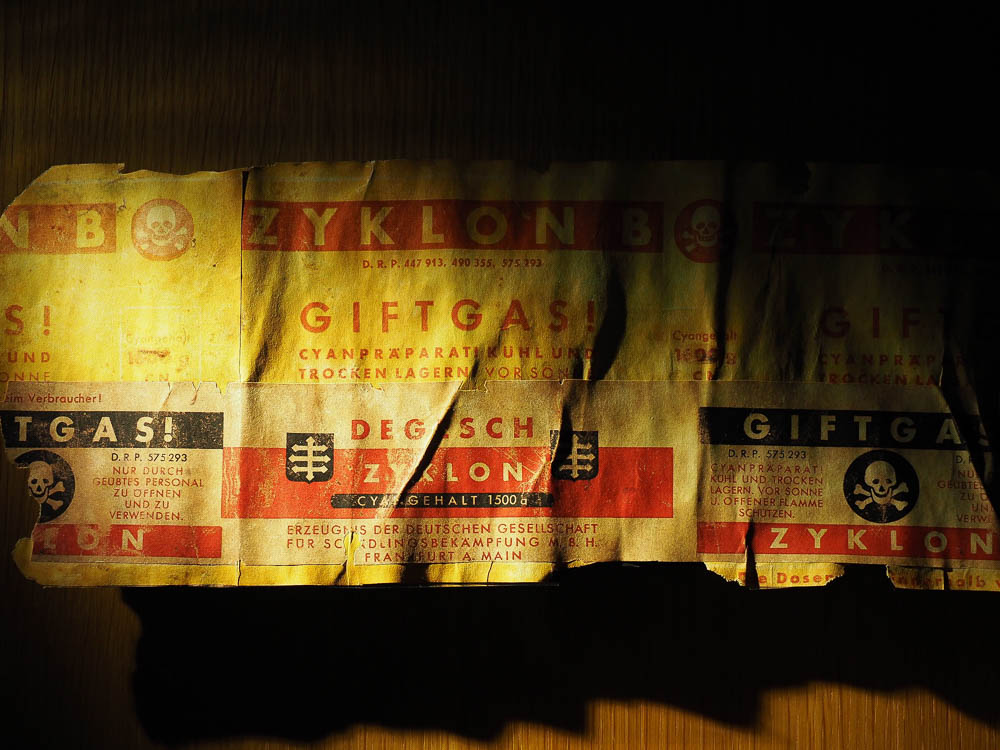
The Caen Memorial Museum is extensive, impressive, and will take up most of your time in Sword Beach. (You could honestly spend an entire day here.) Definitely dedicate a good chunk of time to exploring it in depth.
Pro tip: Don’t miss the General Richter Underground Bunker exhibit. This former German command bunker is located under the museum and is filled some really neat artifacts and information on the German occupation.
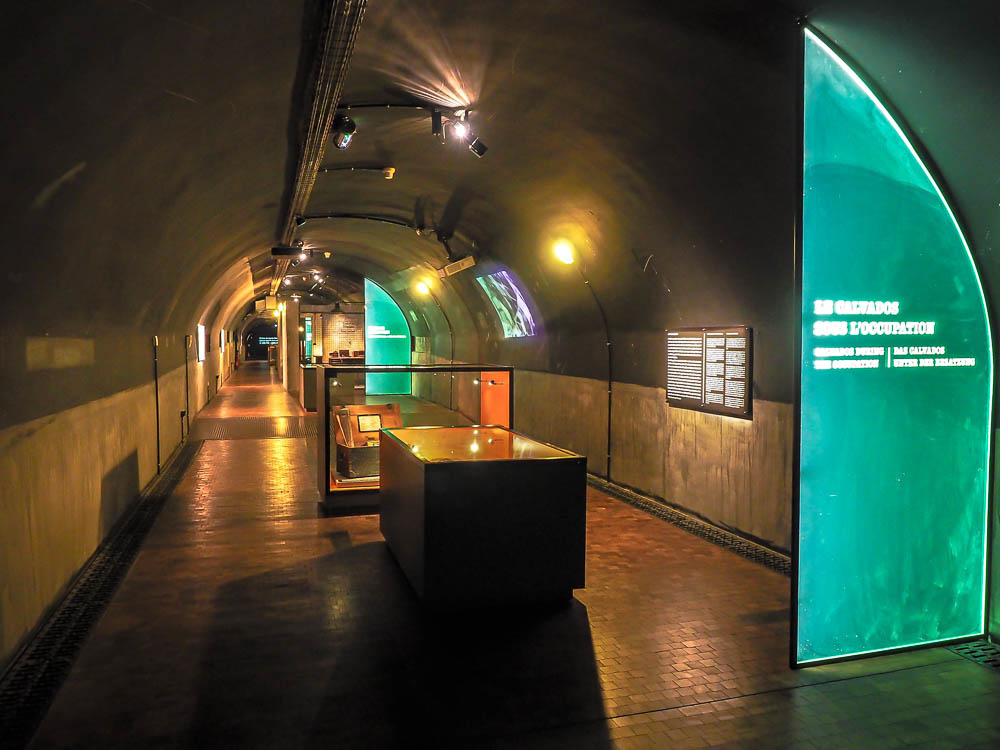
2. Memorial Pegasus
When it comes to what to see at Sword Beach, Memorial Pegasus is my personal favorite museum in the area. But first, a little history refresher:
Back in 1944, the Bénouville Bridge spanned the Caen Canal and capturing it was one of the major objectives of British troops on D-Day. It was later renamed to Pegasus to honor the men of the 6th Airborne Division who wore the emblem of a winged horse on their uniforms. The taking of the Pegasus Bridge is one of the stories featured in the movie The Longest Day.
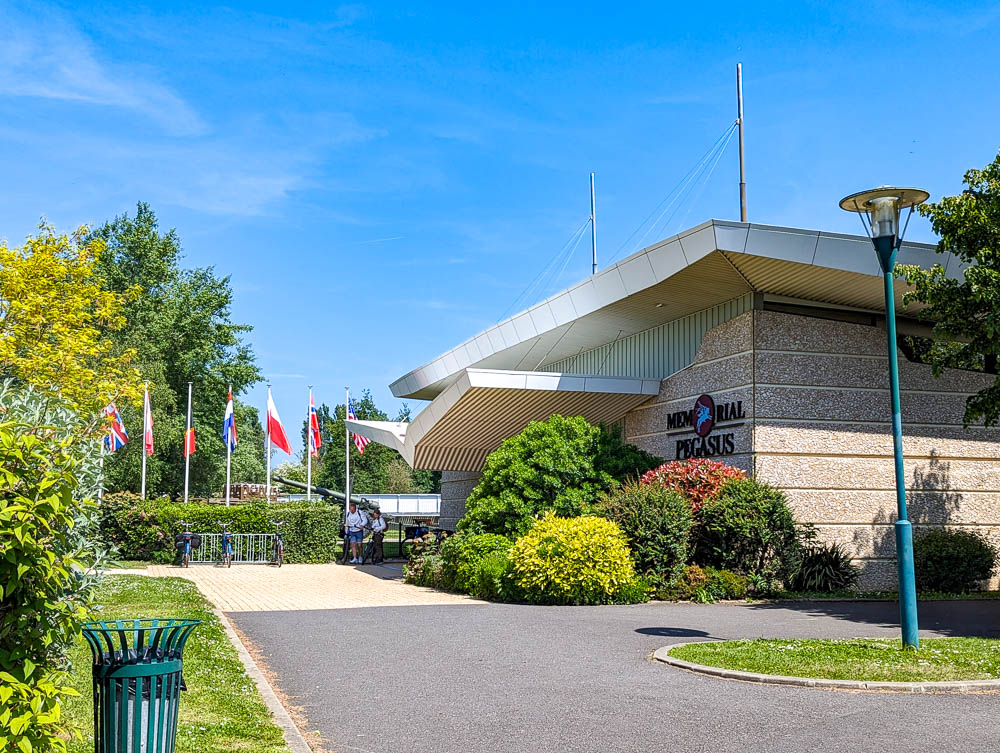
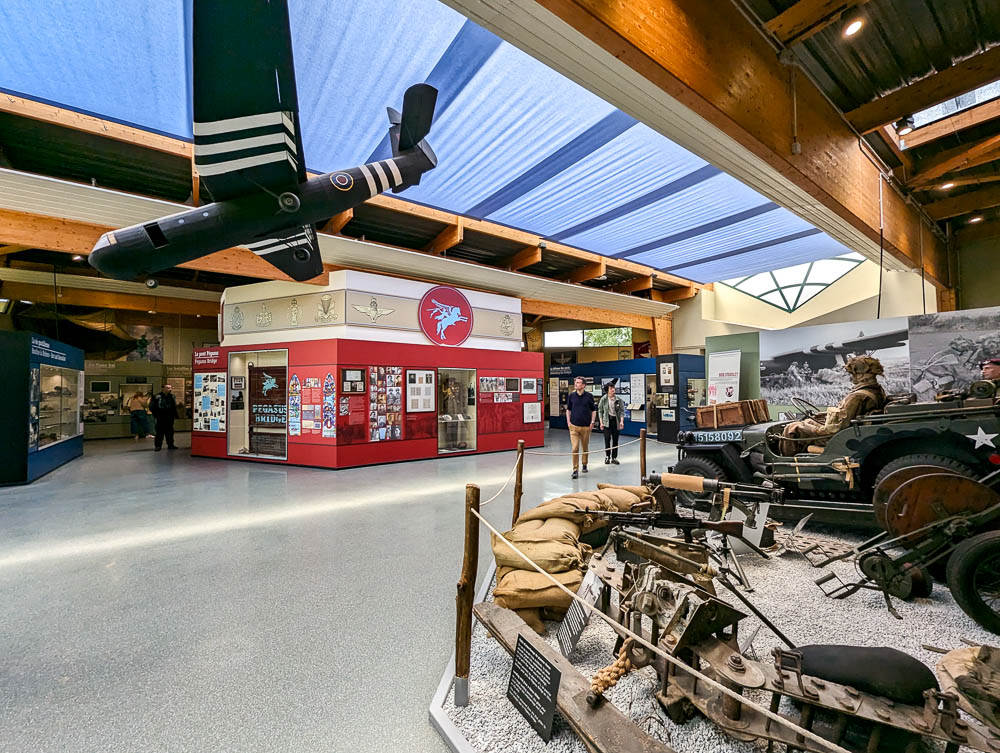
Located near the original bridge location, Memorial Pegasus is a museum and memorial dedicated to these British troops—also known as the “Red Berets.” This museum covers both the military operation of capturing the bridge as well as the personal stories associated with it. This operation is one of the lesser-known D-Day tales but one that played an essential role in the Allied victory.
There are tons of great artifacts here including a life-sized replica of a Horsa glider—the most widely used glider by British troops. During the D-Day invasions, Horsa gliders were used to transport soldiers, vehicles, and weaponry all the way from England to Normandy.
If you’re short on time to dedicate to this area, check out my post on the 7 best D-Day sites to visit in Normandy if you have just one day.
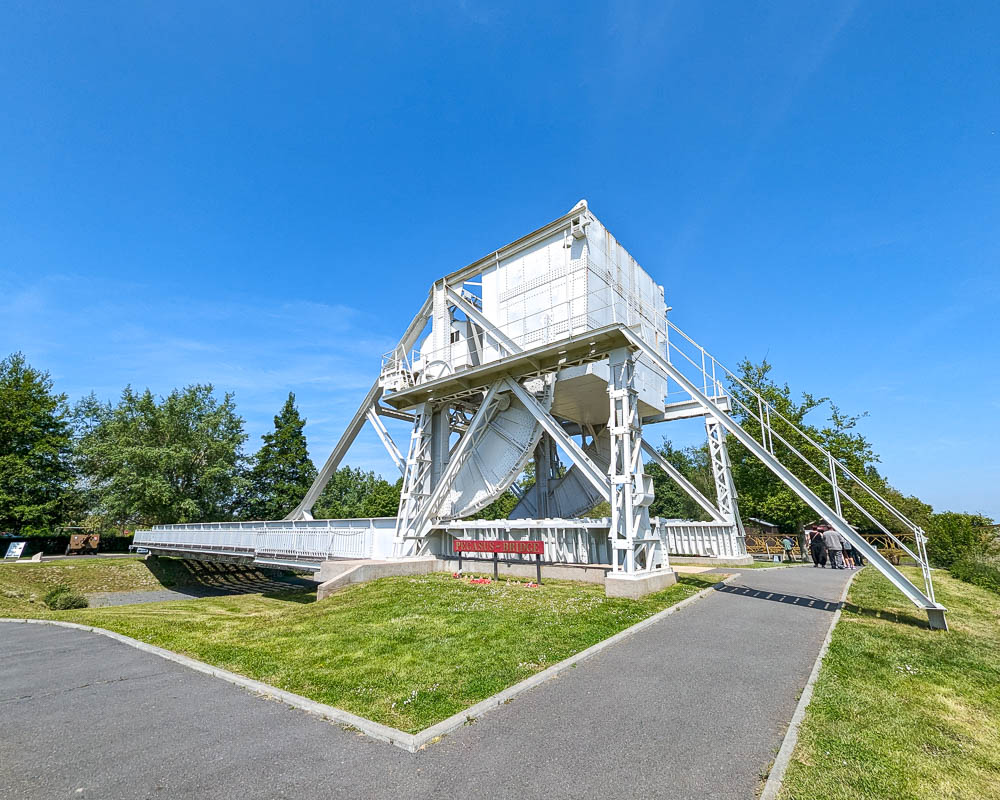
3. The original Pegasus Bridge
Another of the coolest artifacts to see at Memorial Pegasus is the actual original Pegasus Bridge. Replaced by a new bridge in 1994, it was moved to the museum where it is now on display outside at the rear of the museum. In this rear area of the museum you can also see:
- A Bailey Bridge – A special kind of bridge that could be constructed on the fly to support heavy loads
- The Horsa Glider replica – You can even look inside!
- Miscellaneous artillery pieces
- An American half-track
- The remains of a genuine Horsa glider
- And much more
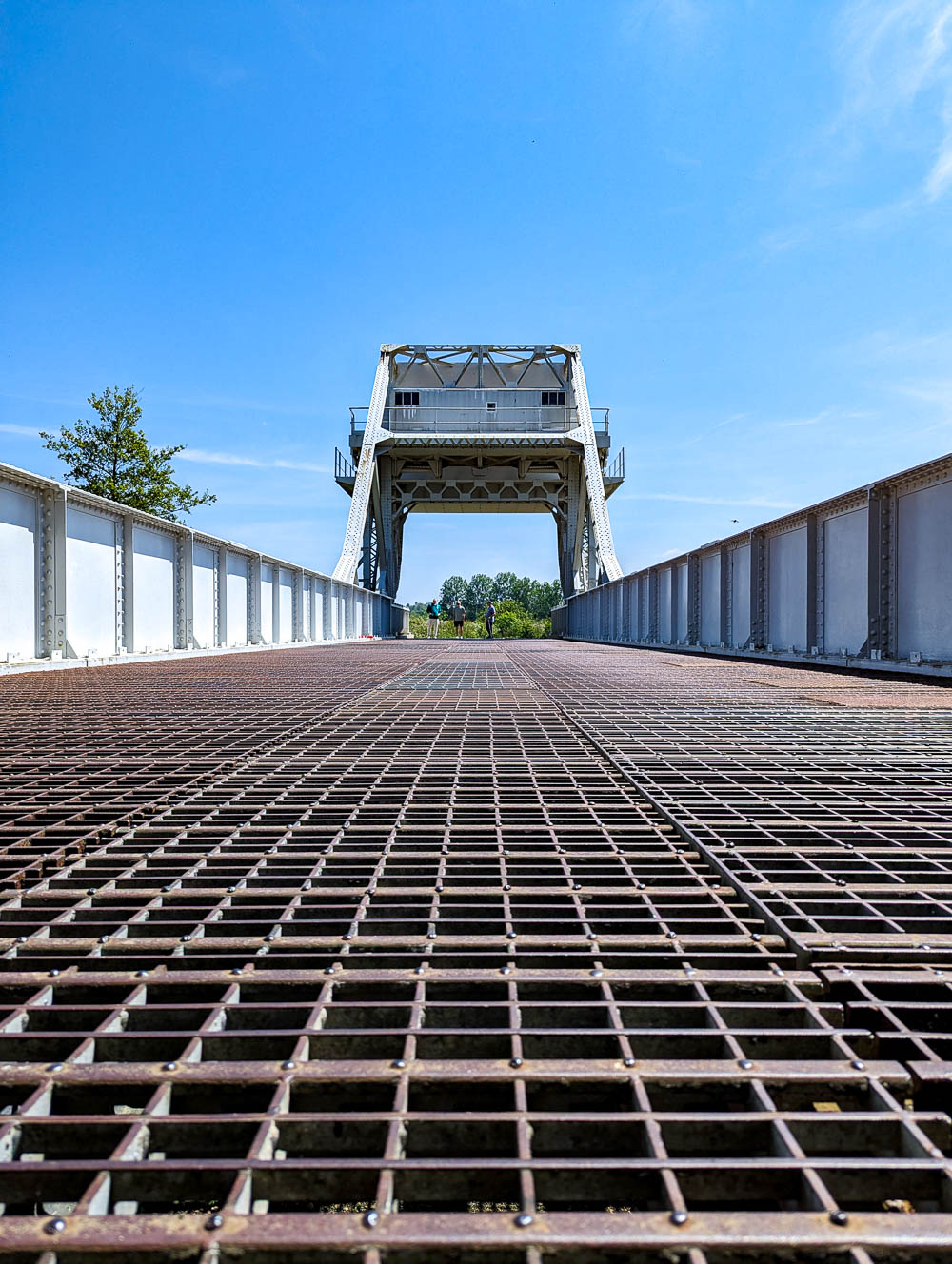
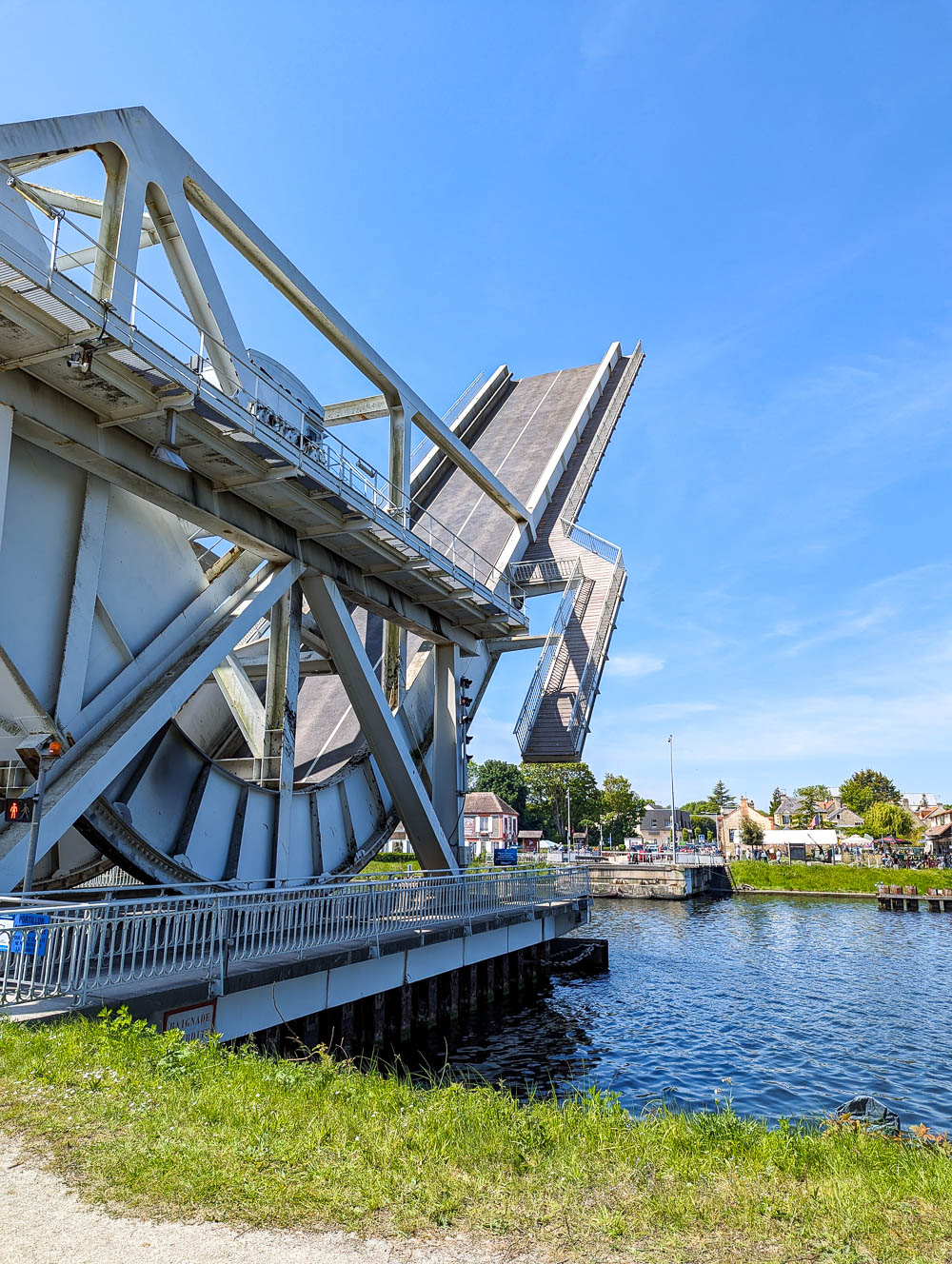
4. The new Pegasus Bridge
Chances are you’ll drive over this bridge either on your way to or from the Pegasus museum. Regardless, you should definitely walk over and check it out up close. The bridge that spans the canal today is new having replaced the original bridge in 1994.
Like the original, the new bridge is also a drawbridge, but of a design you maybe haven’t seen anywhere else. (At least, I haven’t!) This specific style of drawbridge is known as a “Scherzer rolling lift bascule bridge.” Instead of pivoting open like a standard drawbridge, this kind rolls back on a curve and the entire road lifts up.
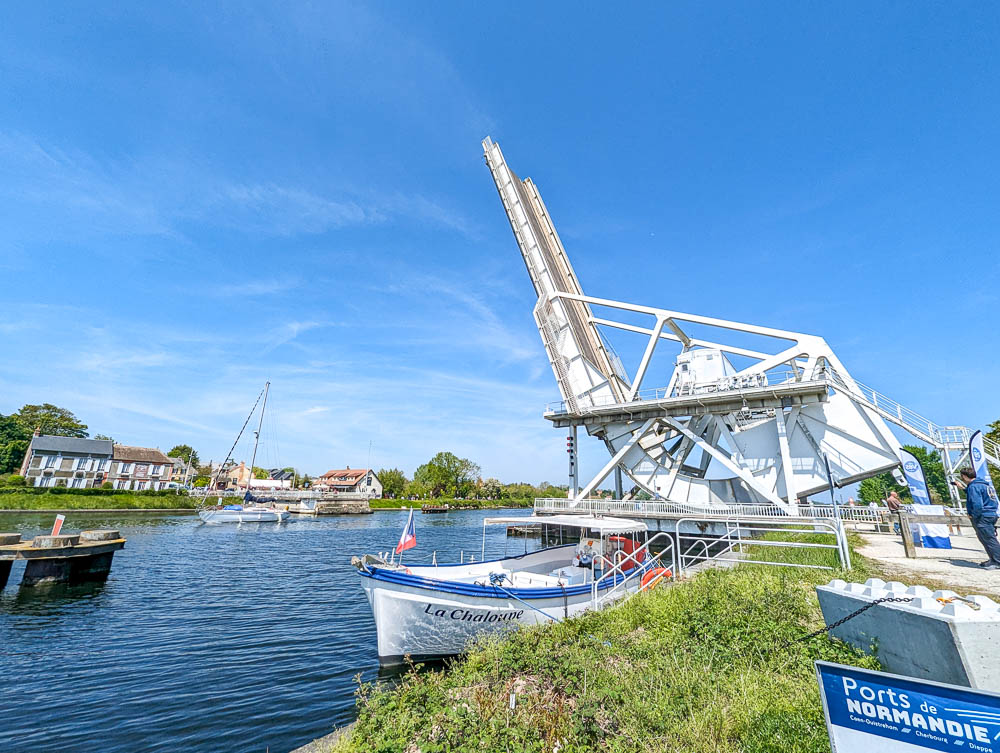
I was lucky enough to see this cool bridge in action during my visit in May 2024 when both a super tall sailboat and an enormous barge went through. If you’re anywhere in the vicinity and hear the alarms go off, get yourself over to the bridge to check it out!
Also check out: What you need to know about driving in Normandy + helpful tips
5. Pegasus Bridge memorials
Also in the area of the new Pegasus Bridge you’ll find a number of other memorials related to the actions on Sword Beach. While waiting for the barges and sailboats to go by, check out:
- Signal Monument – Like the other sectors, Sword Beach also has its own signal monument. This one reads: “6.VI.1944 – The banks of the Orne, first parts of France are liberated by the Allied forces.”
- Monuments to the landings of Major R.J. Howard, Lieutenant RA Smith, and Lieutenant DJ Wood and their Horsa Gliders at these spots
- The Liberty Tree – A tree memorial dedicated to Major Howard’s men, all Allied soldiers, the civilians of Bénouville, and the youth of the world and all future generations
- WN13 bunker with 50mm KWK gun
- Anti-aerial cannon (on the opposite side of the canal)
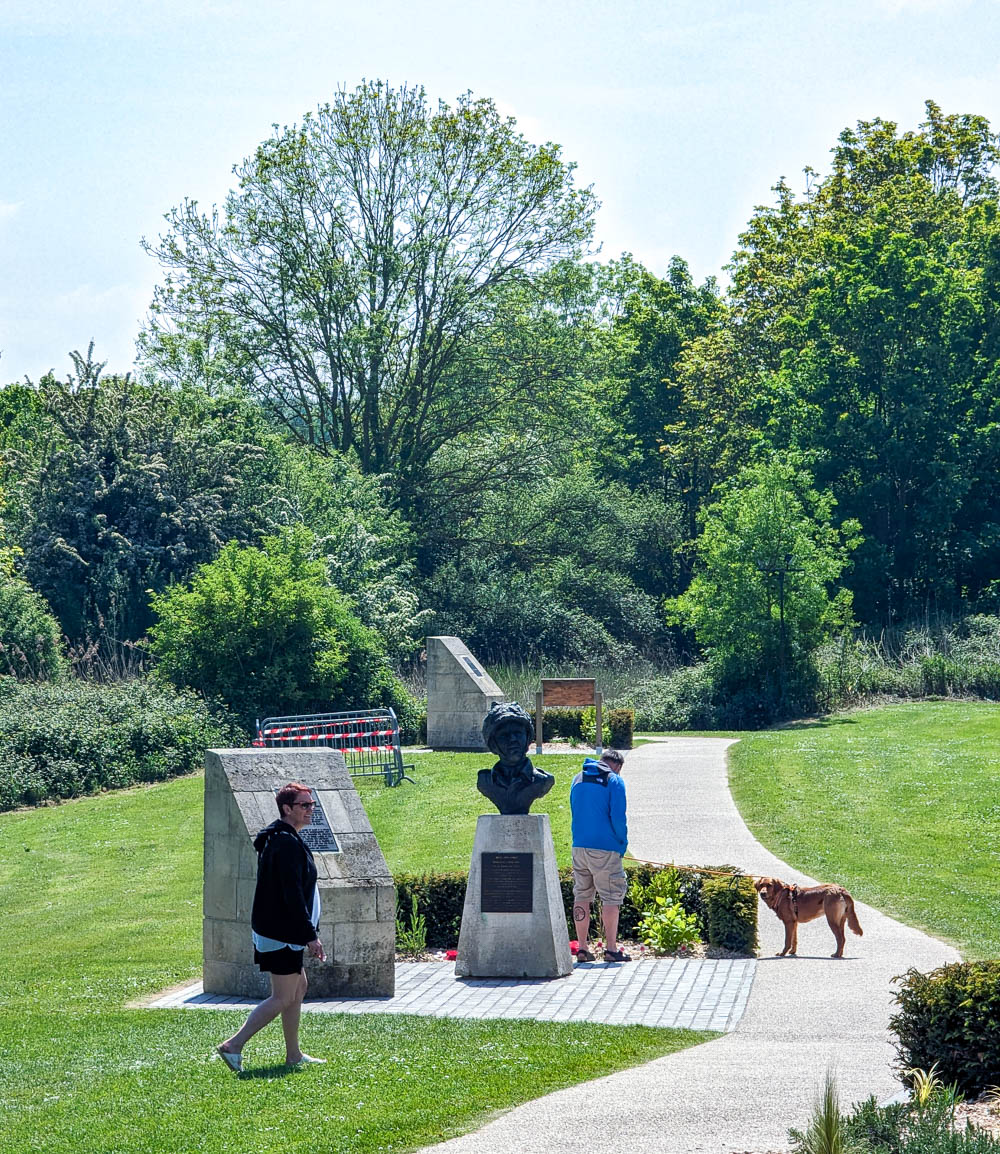
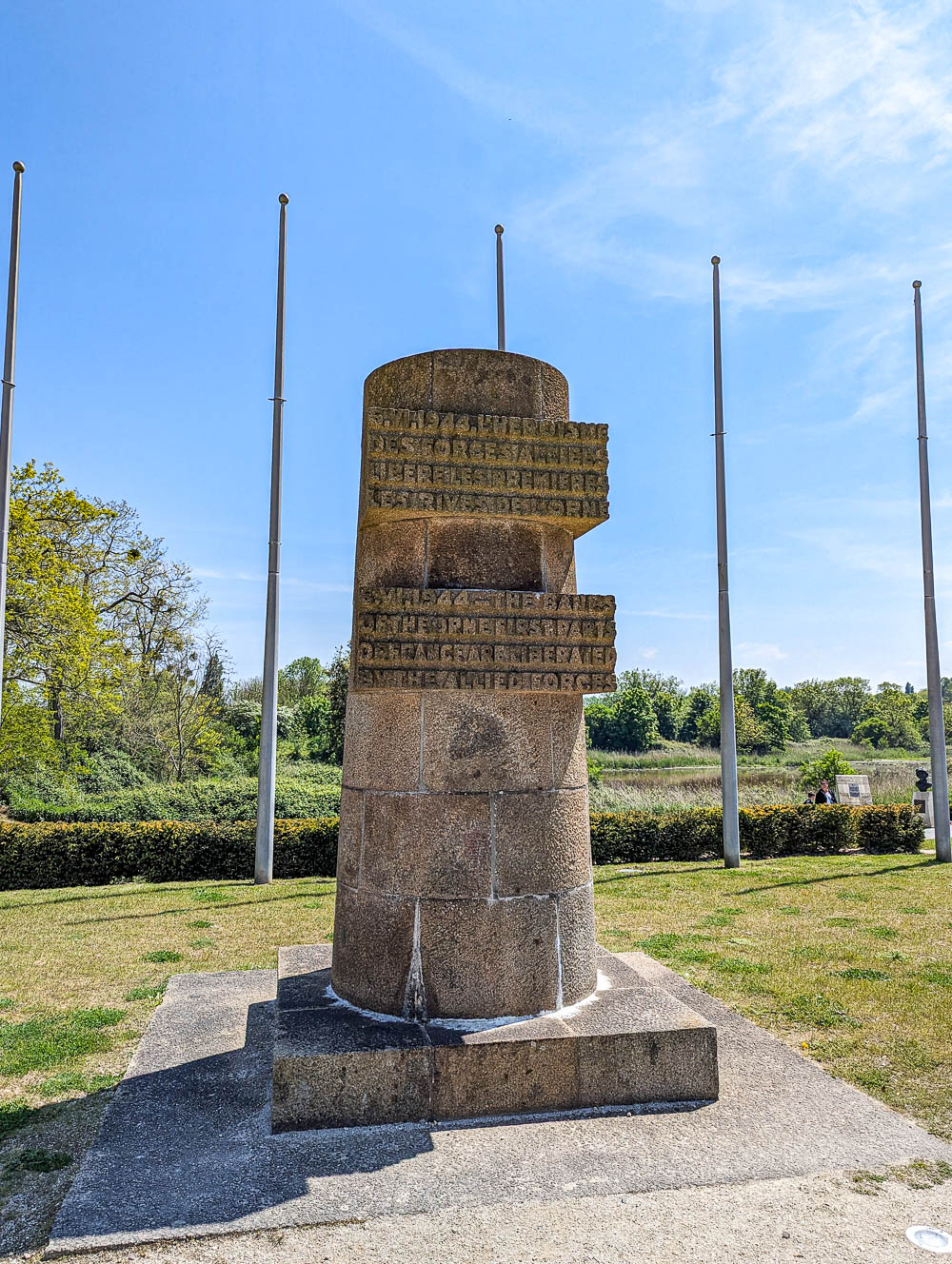
6. Pegasus Bridge Café
Originally known as Café Gondrée, the Pegasus Bridge Café is a small coffee house in the town of Bénouville at the northwest end of the Pegasus Bridge. Many refer to this building as the first French house to be liberated after the D-Day invasions. (Several other sites claim the same, so whether or not this is actually true is up for debate. You get to decide!)
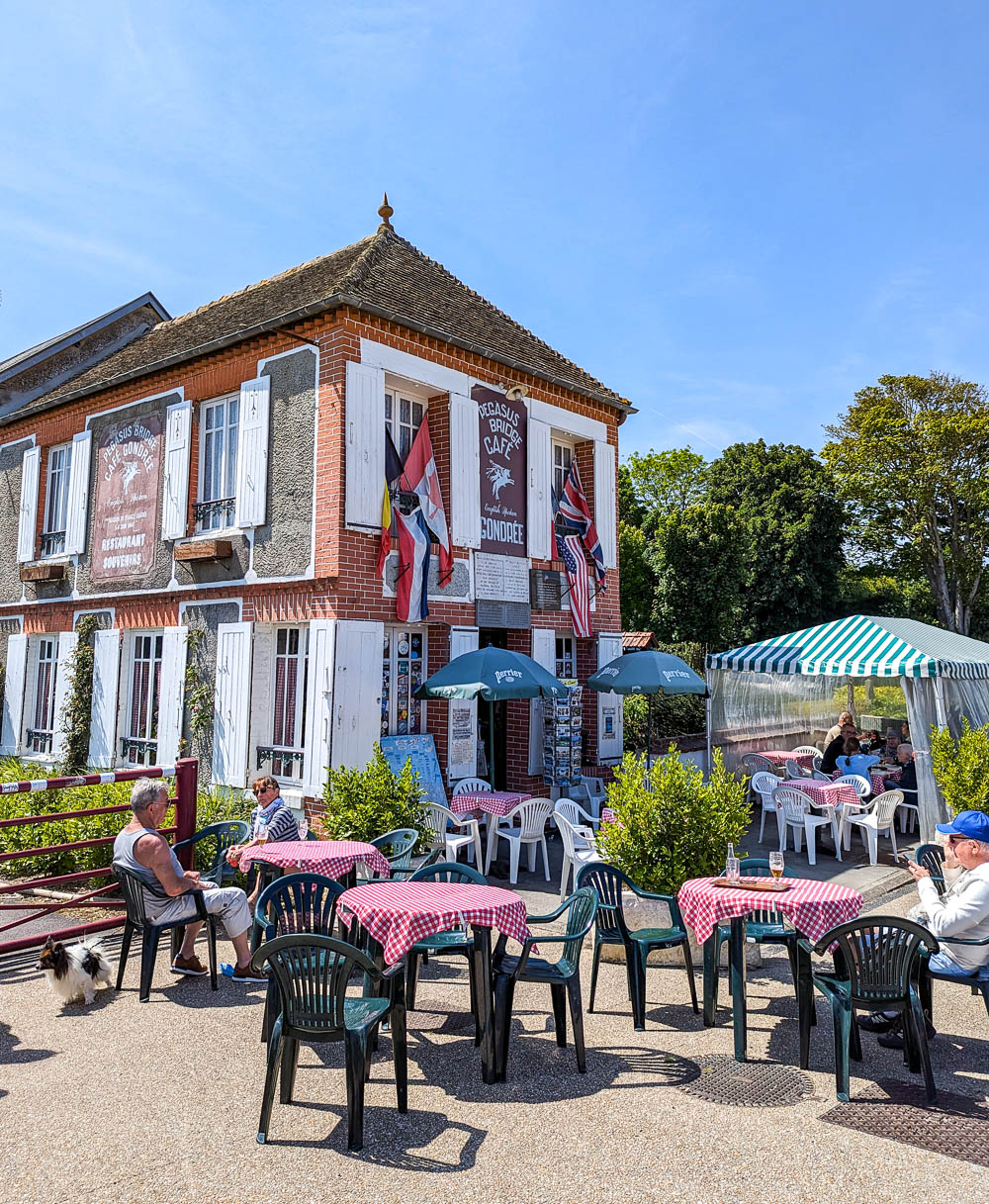
During the war, the café was run by Georges and Thérèse Gondrée, members of the French Resistance who’d passed on information about the bridge’s defenses. After the war, it was here that British paratroopers would henceforth celebrate the anniversary of D-Day.
The building is now listed as a historical monument and still serves customers today. The interior is decorated floor to ceiling in historical photographs and memorabilia, making it a little museum in its own right. When you’re in the area exploring these Sword Beach sites, stop by the Pegasus Bridge Café for a little break.
Read also: 10 Things You Need to Know Before Visiting Normandy’s D-Day Sites
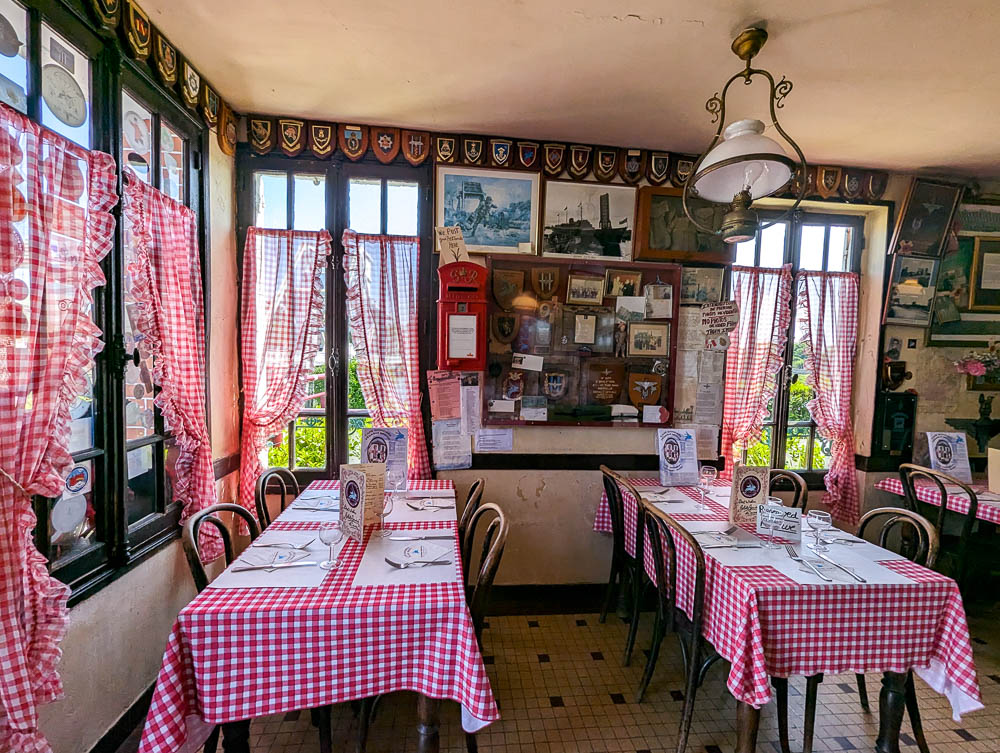
7. Le Grand Bunker (Museum of the Atlantic Wall)
Also known as the Museum of the Atlantic Wall, Le Grand Bunker focuses entirely to the history of the Atlantic Wall. It’s located across the five levels of a former German bunker at Ouistreham.
This bunker was once part of the most powerful coastal battery in the region and served as the nerve center for German command. From here, Nazi Germany controlled all other batteries in the area. Three days after D-Day, British lieutenant Bob Orrell and his men took control of it.
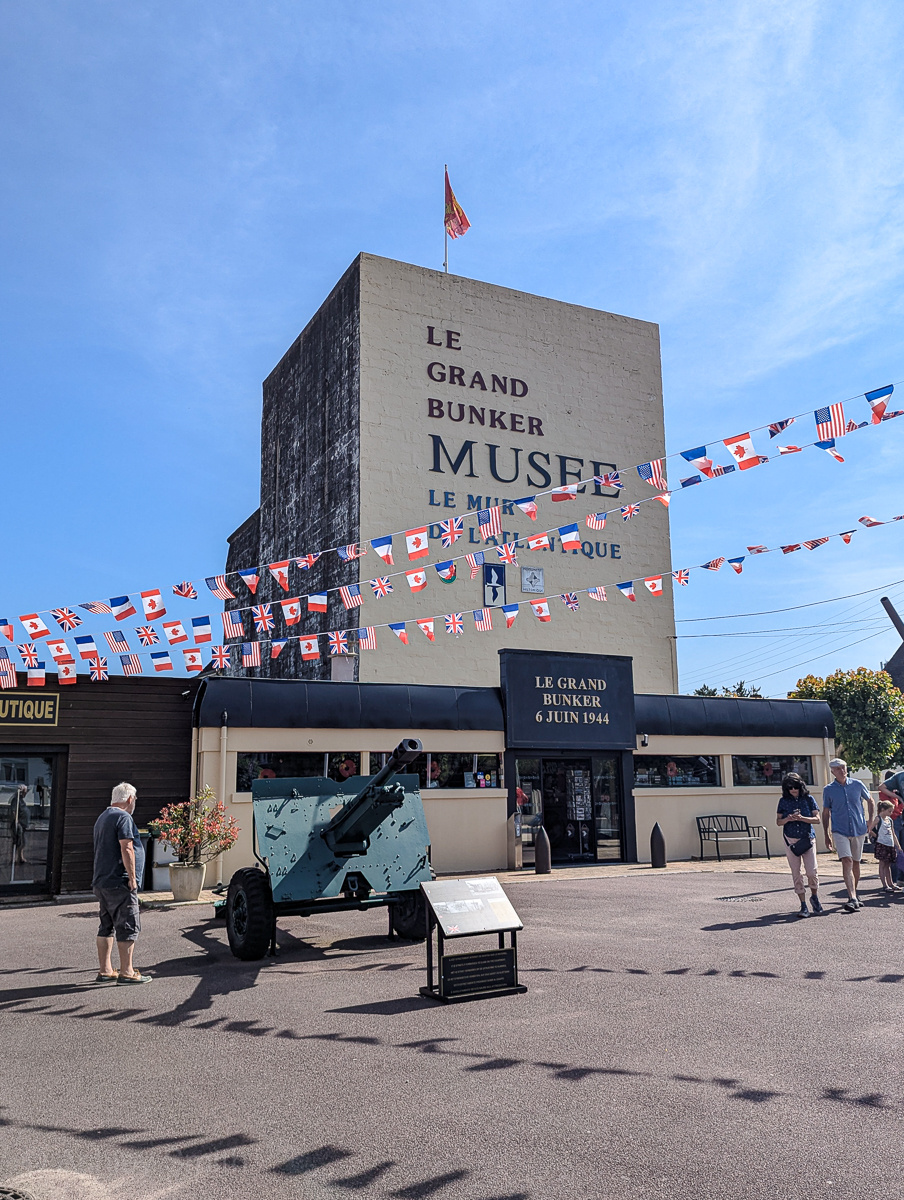
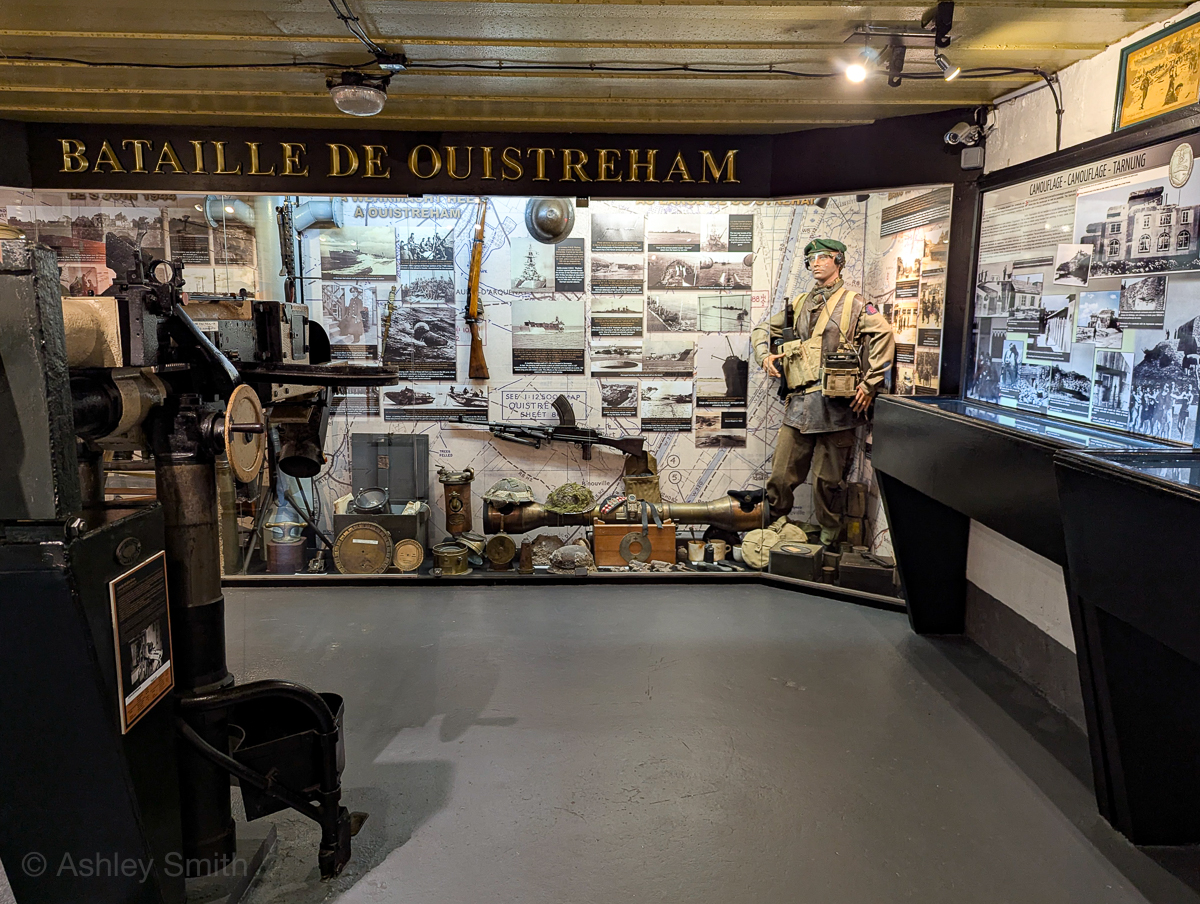
Today, it’s been completely renovated to appear as it did back in 1944. It encompasses all five levels and shows how the Germans organized operations inside the bunker. For those not afraid of heights and tight spaces, you can also head up to the rooftop for 360° views of the entire surrounding area including the beaches.
As a bonus, you can also check out one of the D-Day landing crafts used by Tom Hanks’s character in Saving Private Ryan. This amphibious landing craft was actually used on D-Day, then fully restored and modified for the film. It is now on display outside Le Grand Bunker.
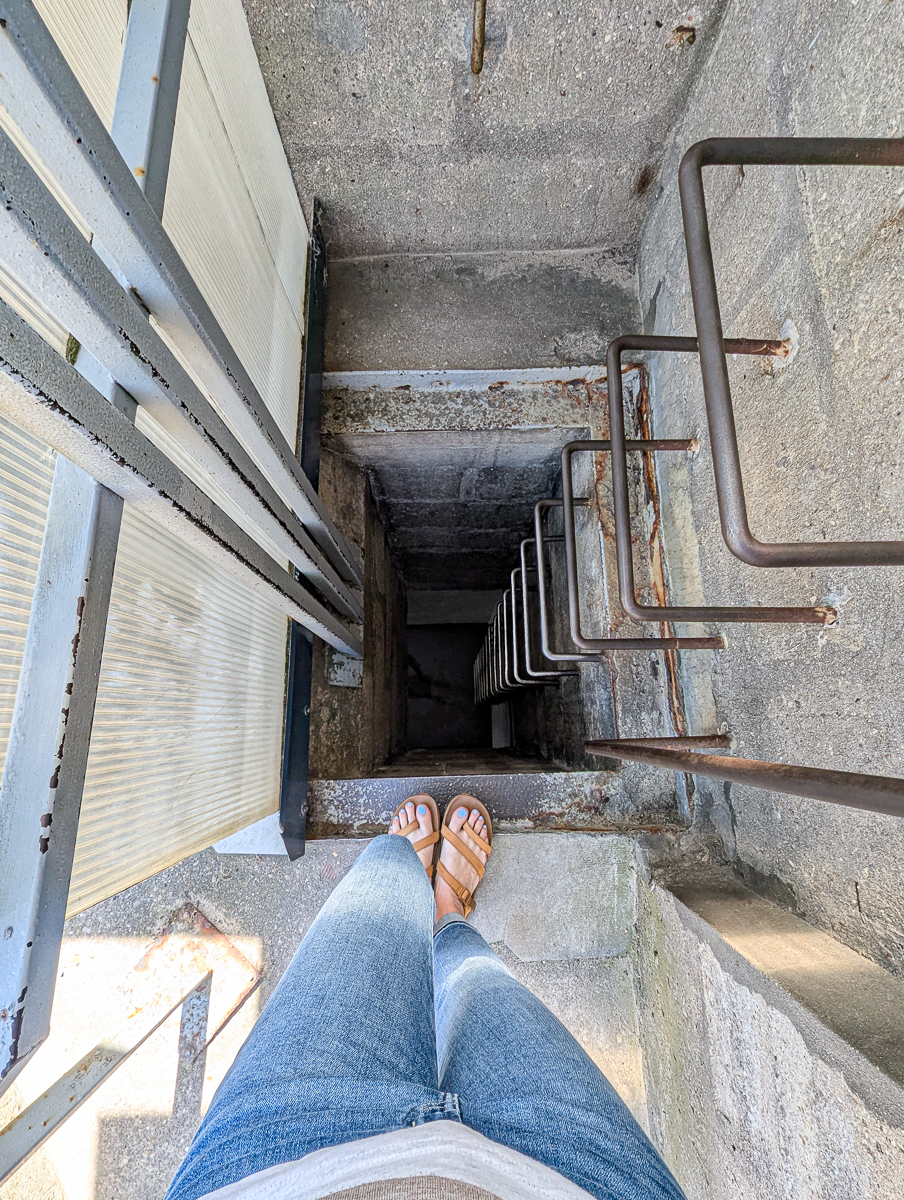
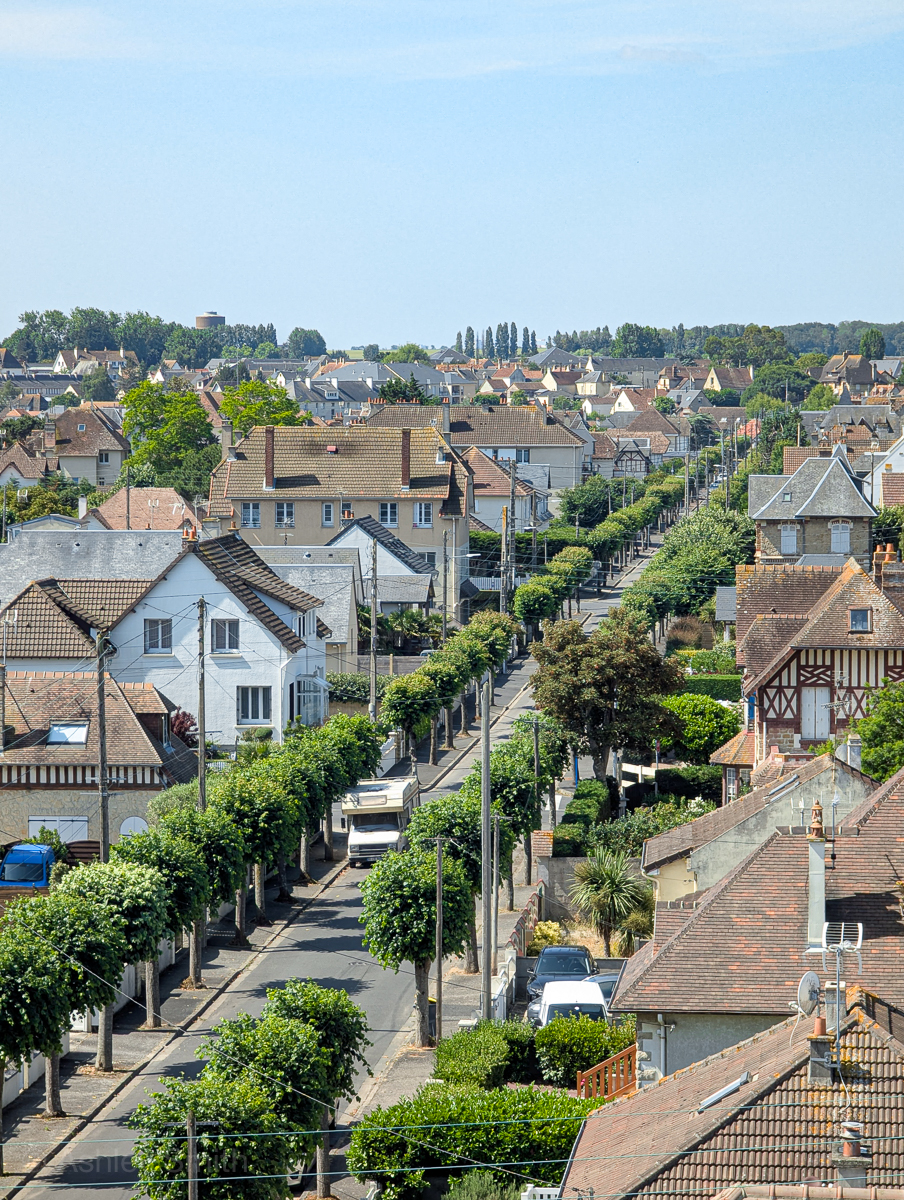
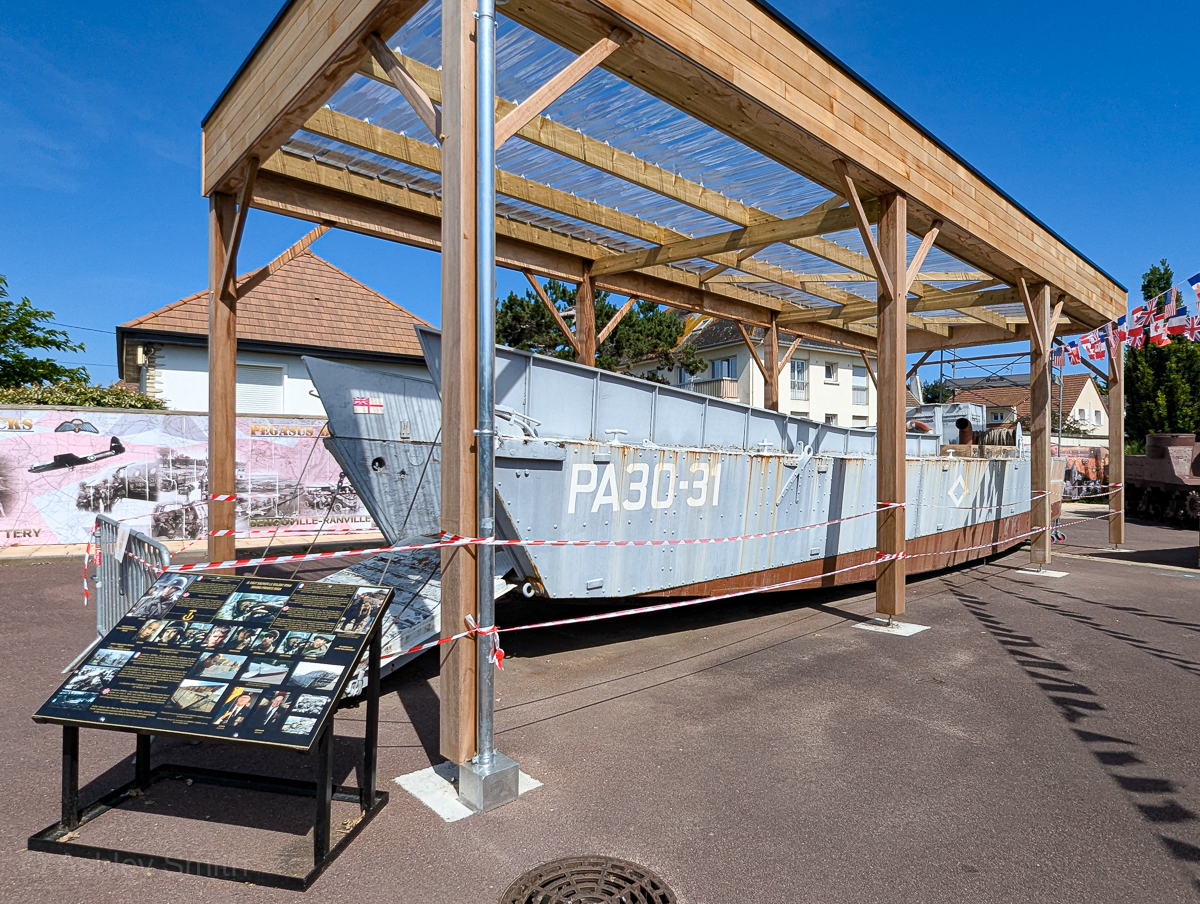
8. D-Day Wings Museum
The D-Day Wings Museum is located inside an airplane hangar at the Carpiquet airfield near Caen. In fact, this hangar was actually used by the Germans as a base for their Stuka bombers during the Battle of Britain.
Inside, this museum focuses on D-Day aviation, much of which is actively under restoration. They have a huge collection of aircraft and all kinds of other items, and even a Barrage Balloon from the 320th Barrage Balloon Battalion! (That was a first for me.)
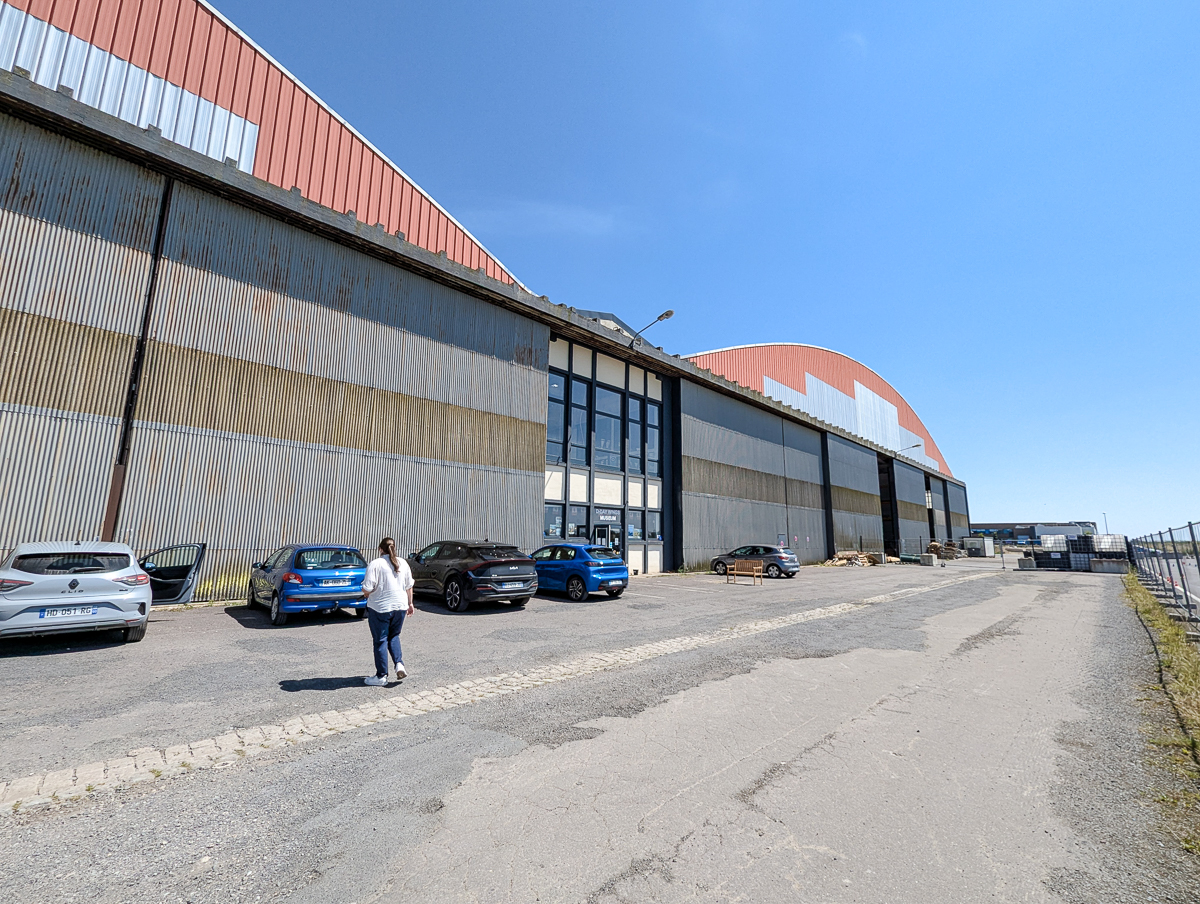
One unique thing about this museum is that they give you the opportunity to sit in some of the historic aircraft. My friend spent some time in the cockpit of a Spitfire (that was actually used in the movie Pearl Harbor). And I opted for the B-17 ball turret gunner–something I’ve always been fascinated with.
Not only did I get to sit in the ball turret, but the staff member then spun me in circles and moved me all around so I could get a more “well-rounded” experience. This was such a cool and unique experience!
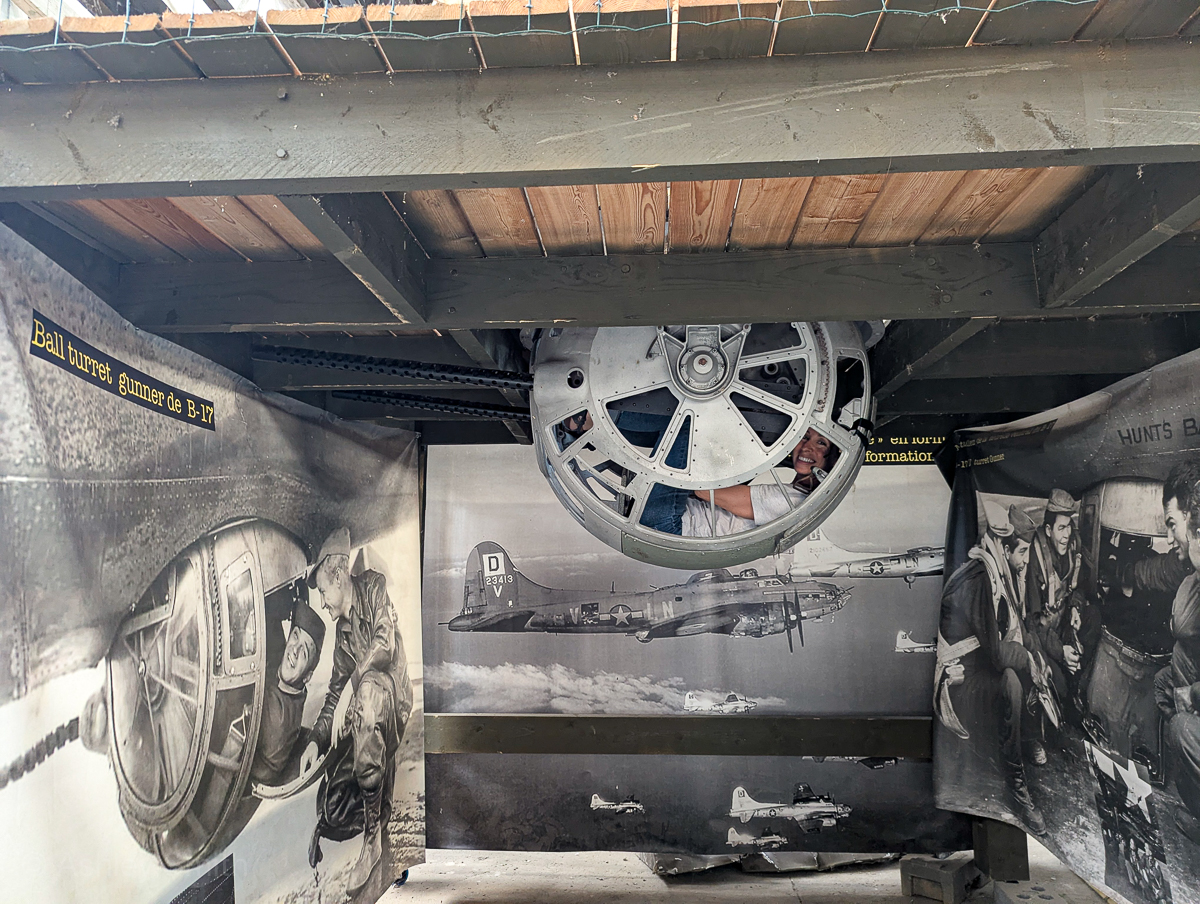
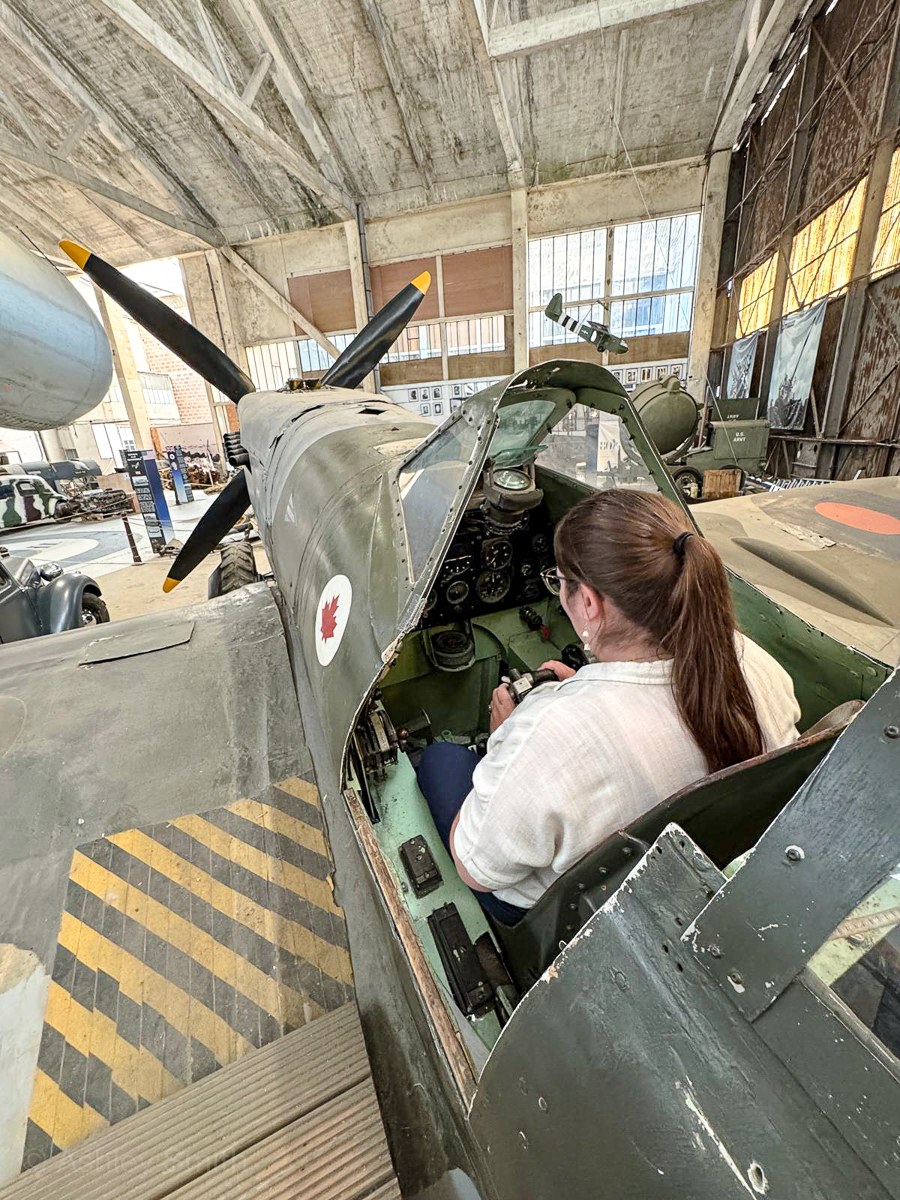
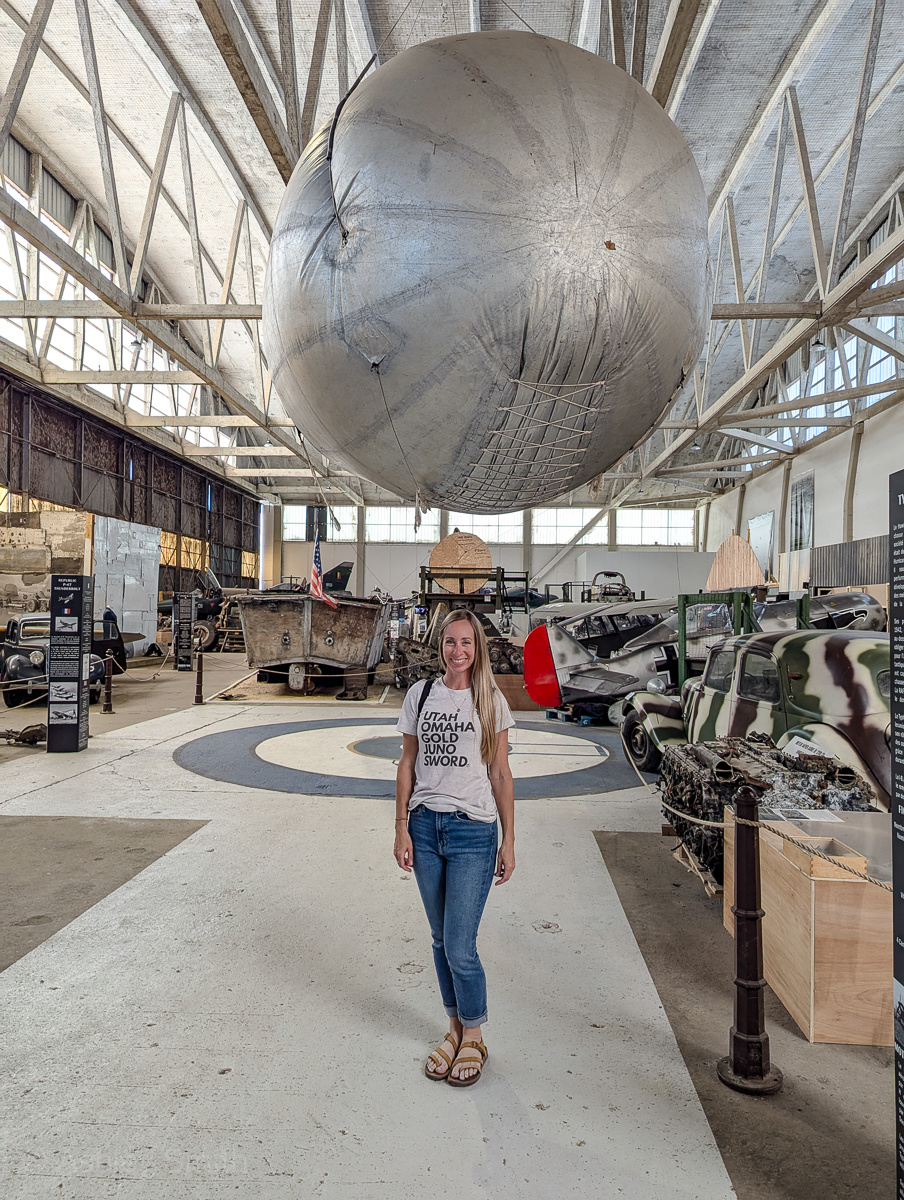
9. Falaise Memorial (Memorial des Civils dans la Geurre)
Translated into English, this museum is known as the Civilians in Wartime Memorial. This is one of Normandy’s lesser-known World War II museums but has a unique focus that makes it a worthwhile stop. The Civilians in Wartime Memorial focuses on what life was like for Normandy’s civilian population during the war.
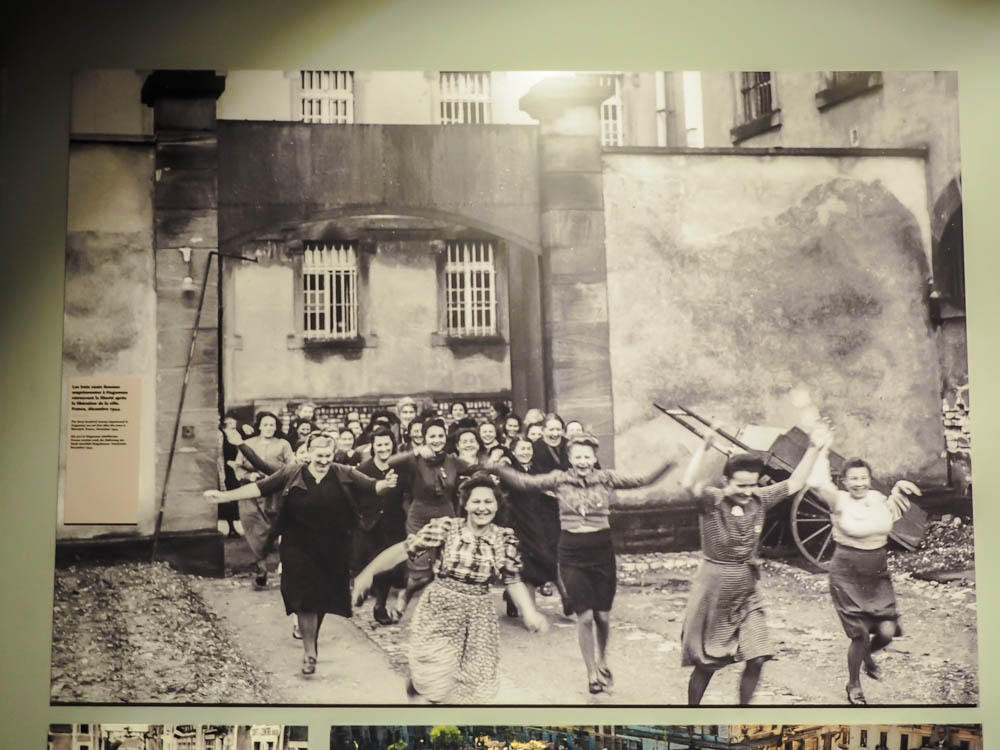
This memorial museum was designed by the Caen Memorial and opened in 2016 making it one of Normandy’s newer war museums. At this museum you’ll learn about:
- The civilians’ complex relationships with soldiers during the war (the combination of being both liberated and bombed by them)
- The daily life of French citizens during German occupation
- Norman resistance
- Jewish persecution
- And the exodus of 1940
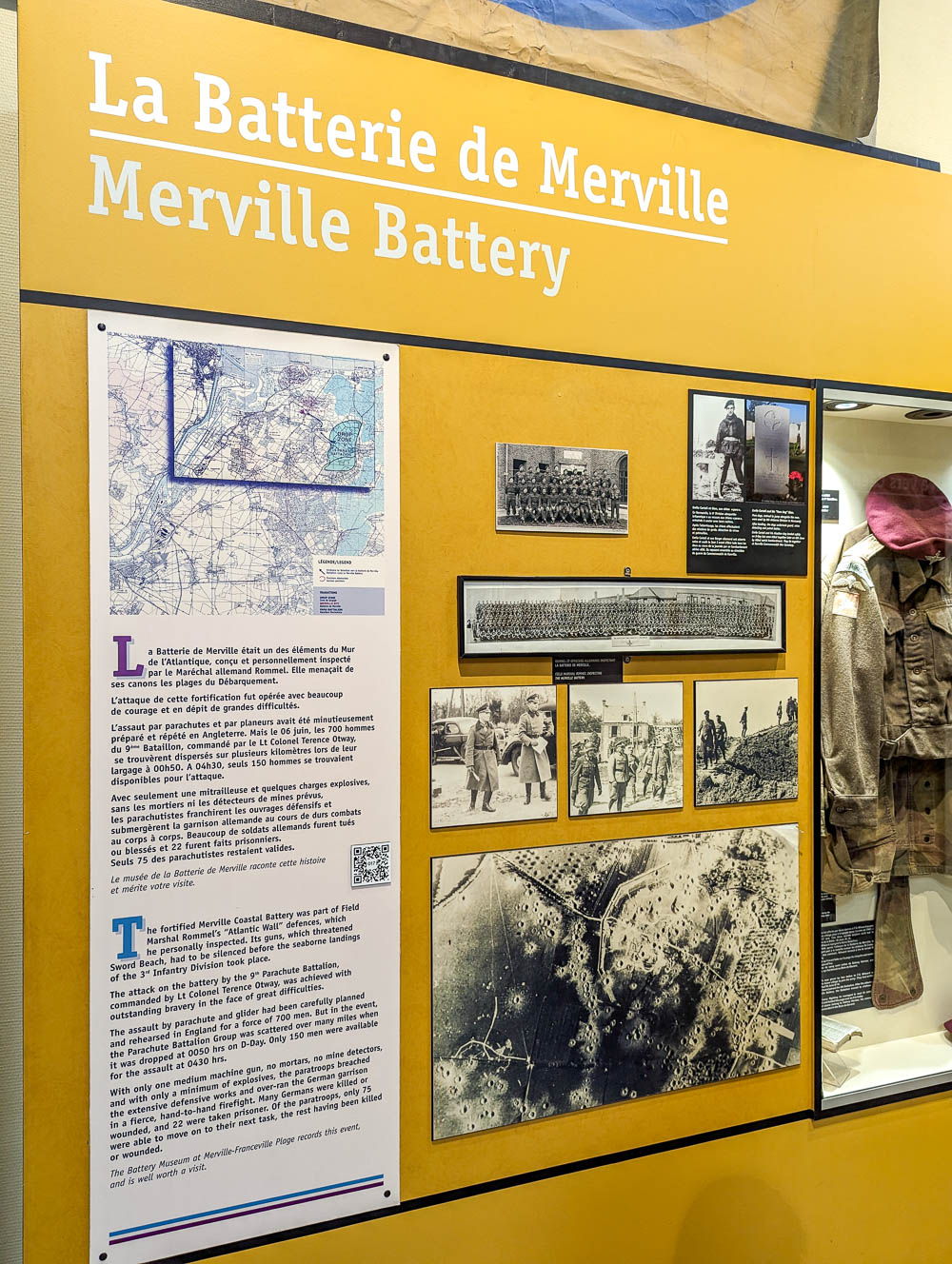
10. Merville Battery Site and Museum
The Merville Battery consists of both a museum dedicated to the Merville Battery and a memorial to the British Army’s 9th Parachute Battalion. Destroying the German battery at Merville so that British troops could land on Sword Beach on D-Day was the work of the 9th Parachute Battalion.
The 9th succeeded in this mission and today you can visit the battery in its entirety. You’ll see the battery itself along with tanks, airplanes, weaponry, dormitories, and more. You can sit inside a Douglas C-47 Dakota, explore the concrete casemates, and experience their immersive sound and light (and smell) show that recreates the historic events. (This show happens every 20 minutes.)
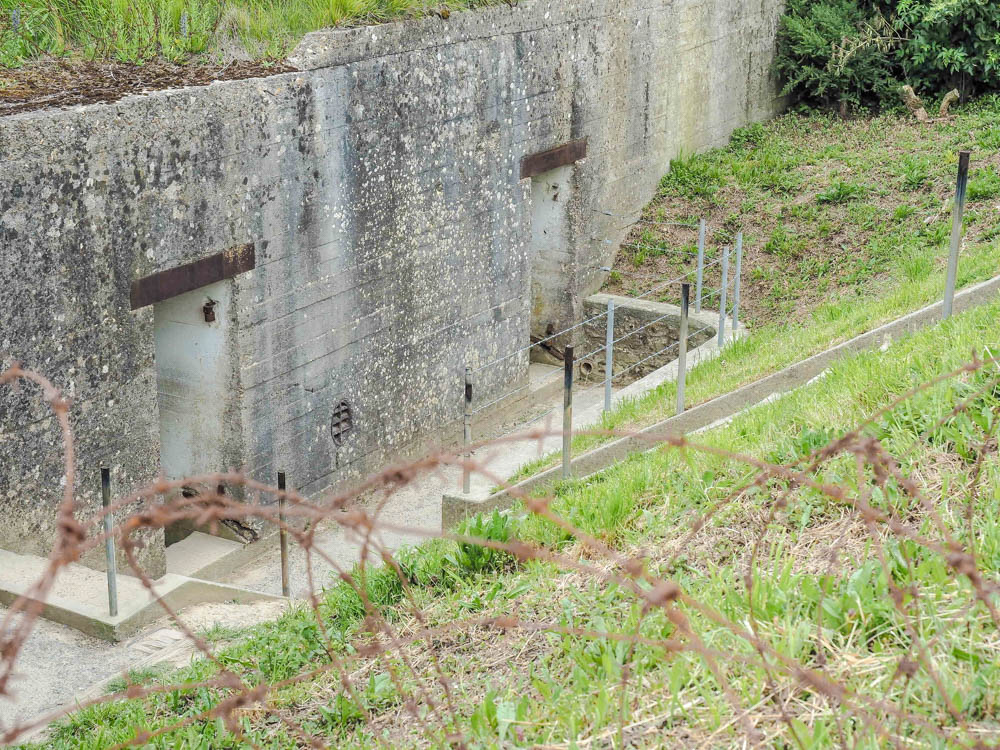
11. The Hillman Site
The Hillman Site is a small museum located at the former Hillman Fortress, a German bunker complex attacked by Allied forces on D-Day.
The exterior parts of the site are open year-round and the memorial is open only during July and August. Volunteers lead free guided tours during these months as well. You can explore the complex, check out historical artifacts, and get interesting information on how the Germans used the complex during WWII.
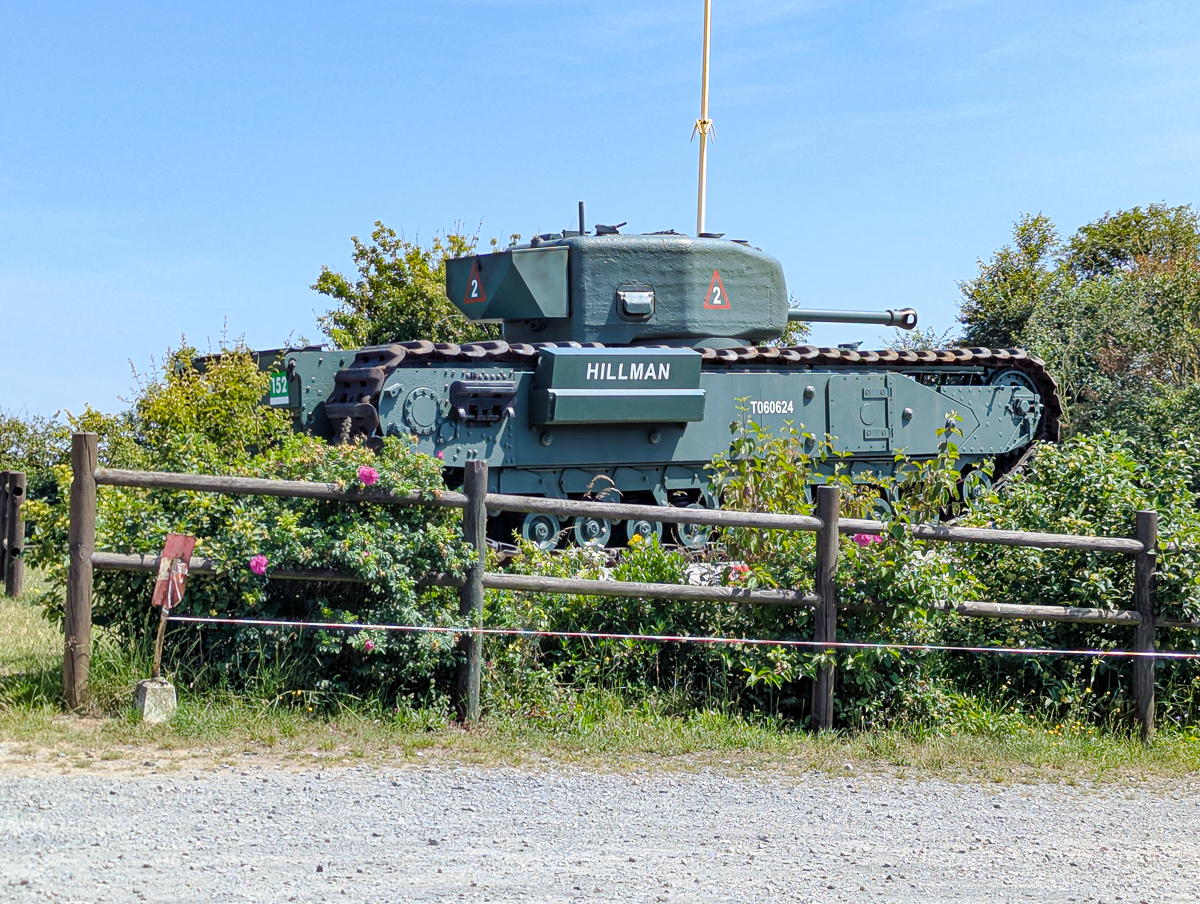
12. The Bagpiper of Normandy
On the shores of Sword beach you’ll find a memorial to Bill Millin, a British man known as the Bagpiper of Normandy. Millin was the personal piper of Simon Fraser, the 15th Lord Lovat (a Scottish title) and prominent British Commando during World War II. Fraser’s troops landed at Sword Beach on D-Day.
While bagpipes had been traditionally used in battle by Scottish soldiers, by the time of World War II they were restricted to the rear areas. (Go figure.) Regardless of these mandates, piper Bill Millin nevertheless played his bagpipe up and down Sword Beach during the height of battle, in a kilt no less.
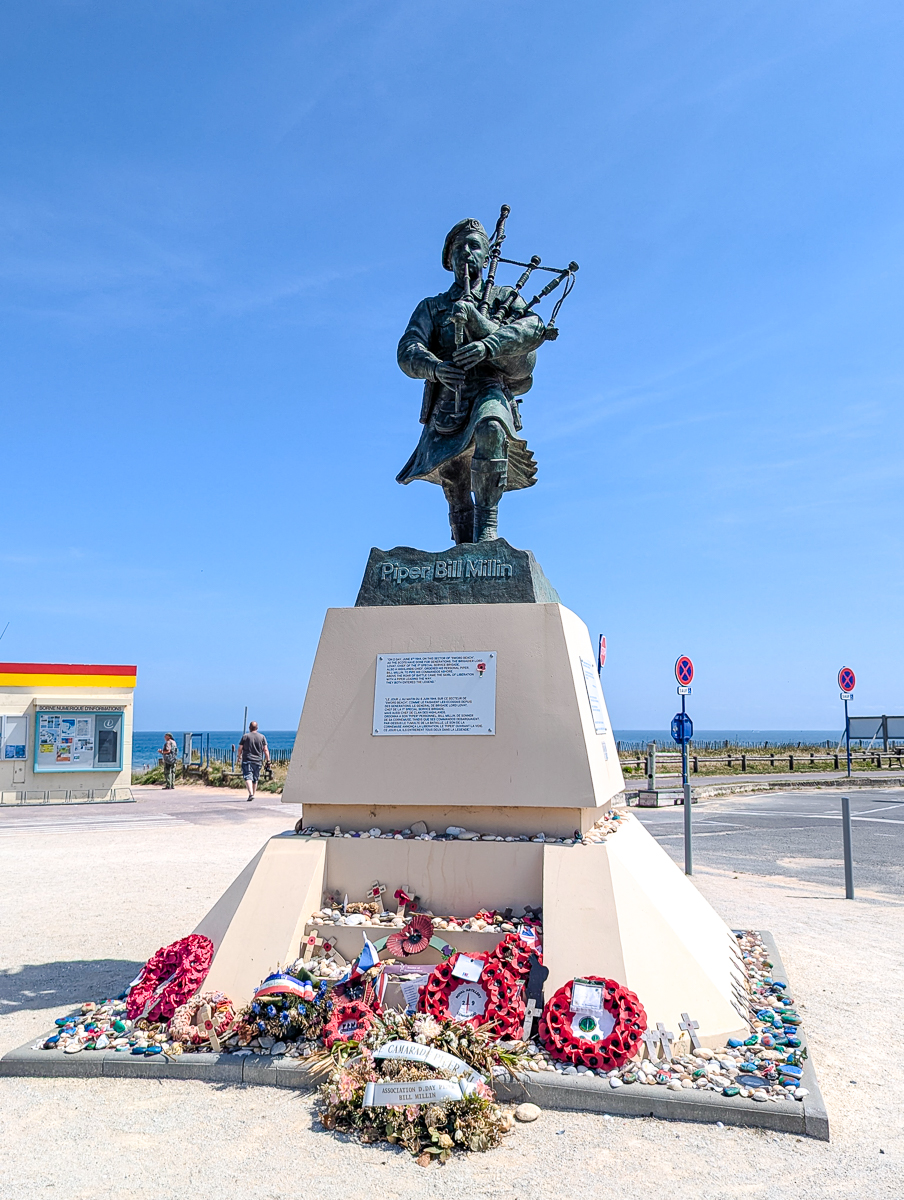
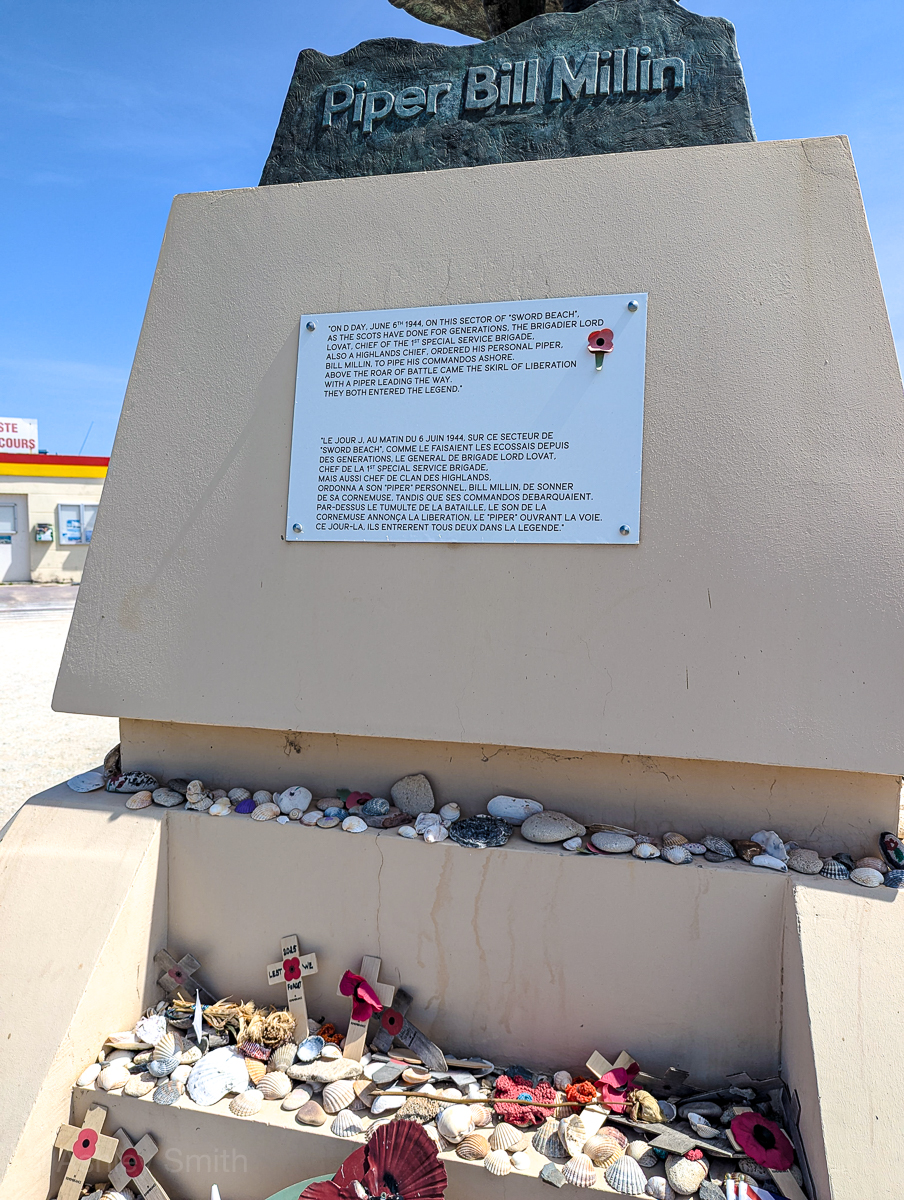
Somehow, Millin survived unharmed. (German snipers later admitted that, though Millin had been in their sights, they took pity on the man they thought was mad and refused to shoot him.) He and Fraser made it all the way to the Pegasus Bridge where Millin played his bagpipes as the British crossed it.
Today, up on the shores of Sword Beach you can see a memorial statue to Millin, the Bagpiper of Normandy. It stands at the intersection of Boulevard Maritime and Avenue de Bruxelles and features a bronze bagpiper atop a concrete base with three memorial plaques.
Pro tip: You can see Millin’s bagpipes on display at the Memorial Pegasus museum. And don’t miss his story in the movie The Longest Day. (This bizarre tale one of my personal favorite anecdotes from the Normandy invasions. You can’t make this stuff up.)

13. French-British Museum of Commando N°4
The Museum of Commando N°4 presents the landing at Sword Beach from the angle of the Franco-British commandos. Commando N°4’s mission was to liberate the town of Ouistreham and then join the British paratroopers at the Pegasus Bridge. This museum tells their stories.
Located in the town of Ouistreham, this museum will take you about an hour to go through, 20 minutes of which is an introductory film detailing this commando’s actions on D-Day. The exhibits then tell their stories through photographs, uniforms and weapons, and more.

14. Kieffer Monument – Free French Soldiers Memorial
Overlooking Sword Beach is the Kieffer Monument, also known as the Memorial to Free French Soldiers. Designed to resemble a giant flame, it pays tribute to all the forces of Free France who participated in the D-Day landings.
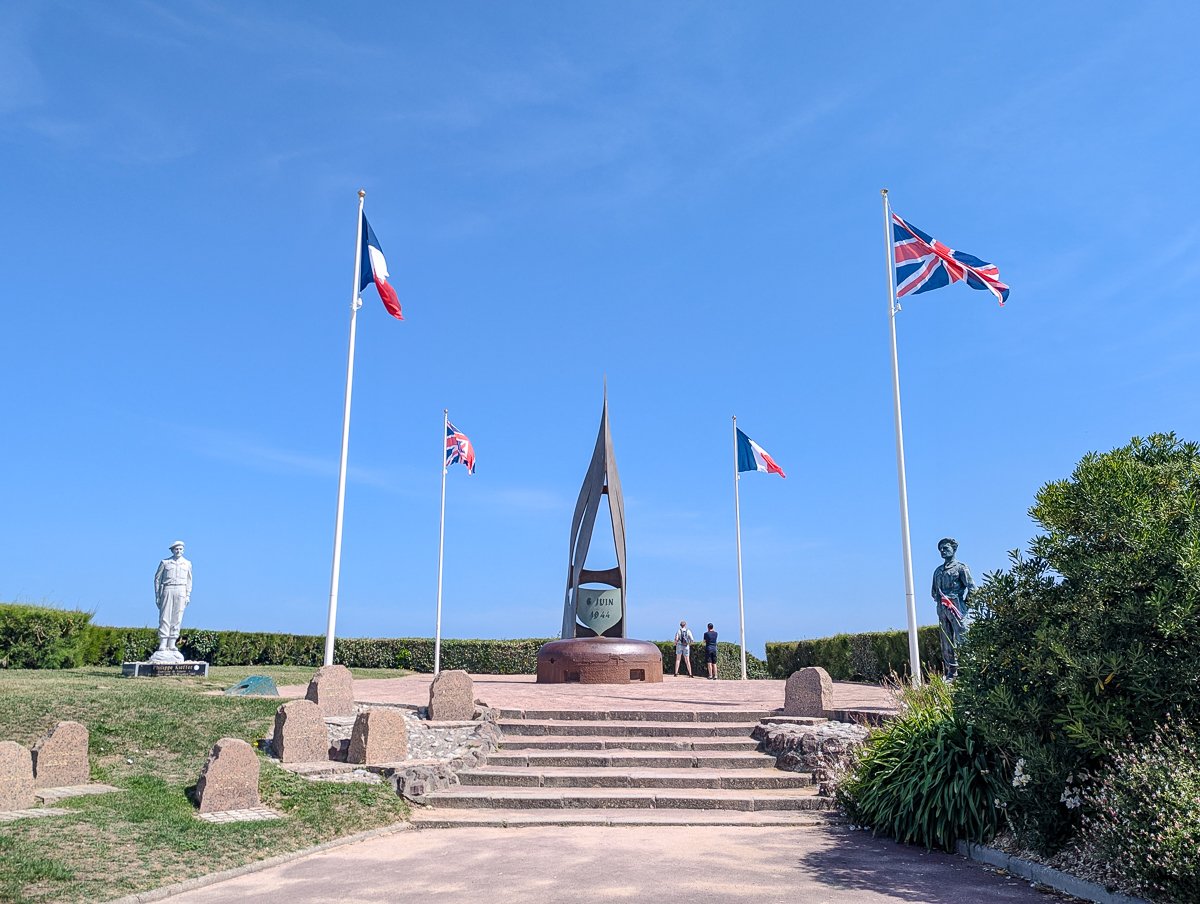
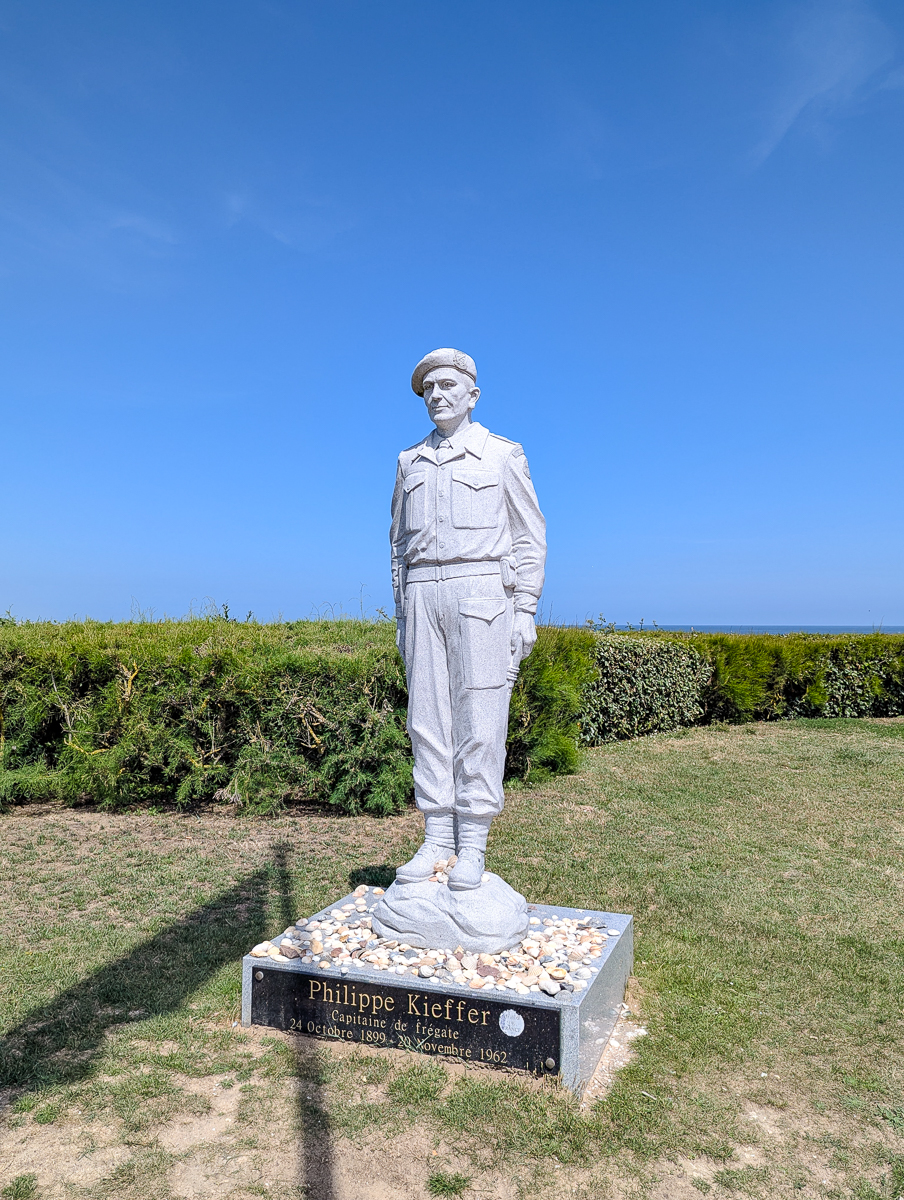
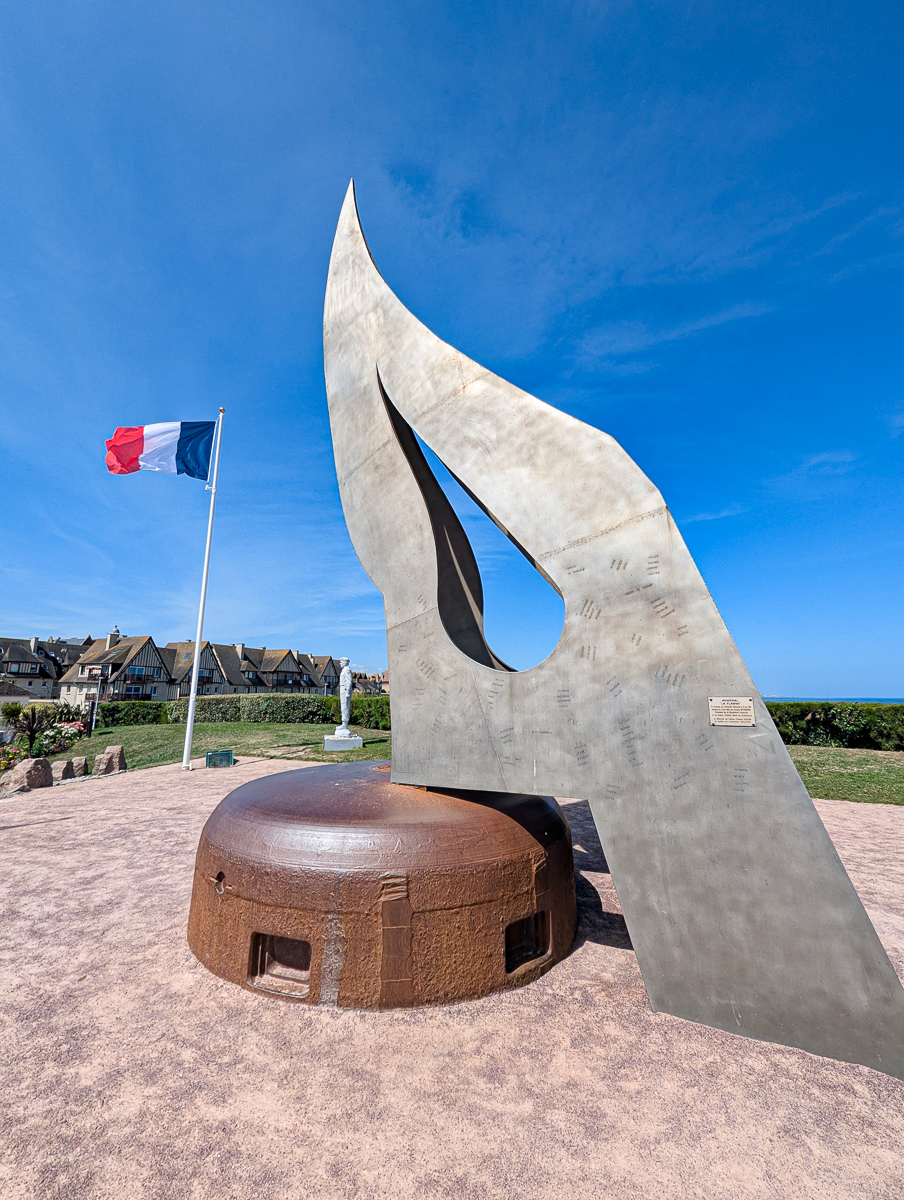
15. Hermanville War Cemetery
Located at Hermanville-sur-Mer a little bit north of Caen is the Hermanville War Cemetery, the final resting place of Commonwealth soldiers who died on Sword Beach on June 6th and on the first days following the Normandy landings. (It was originally called Sword Beach Cemetery for this reason.)
Hermanville War Cemetery contains the graves of 1,003 World War II burials, 103 of them remain unidentified. You can find more information here: cwgc.org.
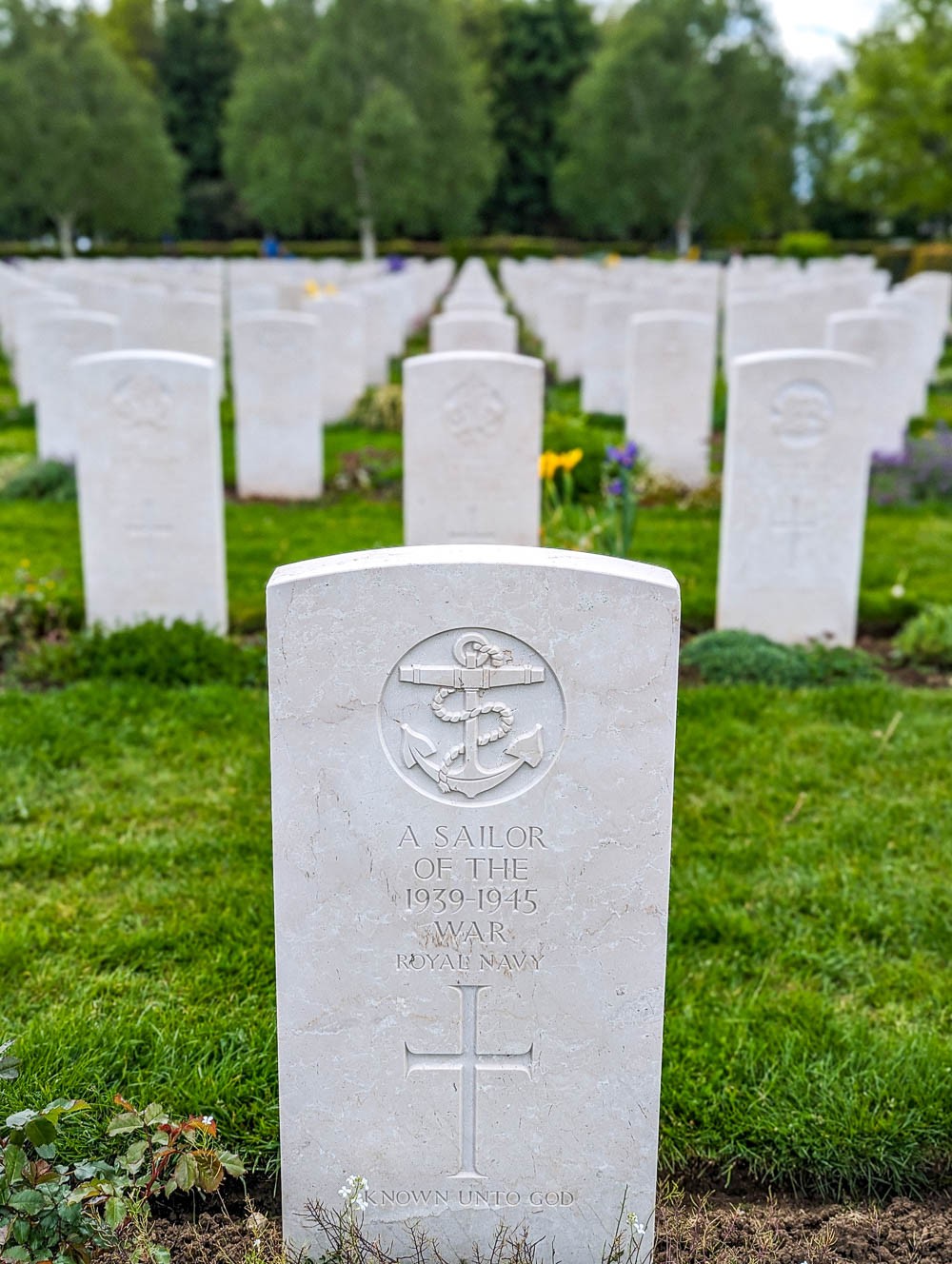
16. D-Day 70th anniversary memorial
Up on Sword Beach itself, near the head of the Caen Canal, you’ll find the large, multi-part D-Day 70th anniversary memorial. The two outer pieces contain pictorial carvings of historic scenes (June 6, 1944 on the left, June 6, 2014 on the right).
The two taller pieces in the center also focus on June 6, 1944 (L) and 2014 (R). The left one contains stats on how many soldiers landed on Normandy’s beaches and then how many died, as well as civilian and German losses. The right one gives stats on those who attended the 70th anniversary celebration.
The center stone is carved with words from Winston Churchill—on the top, part of his address to the House of Common in 1940 (“We shall fight on the beaches…”). On the bottom, part of his address at the European rally in 1948.
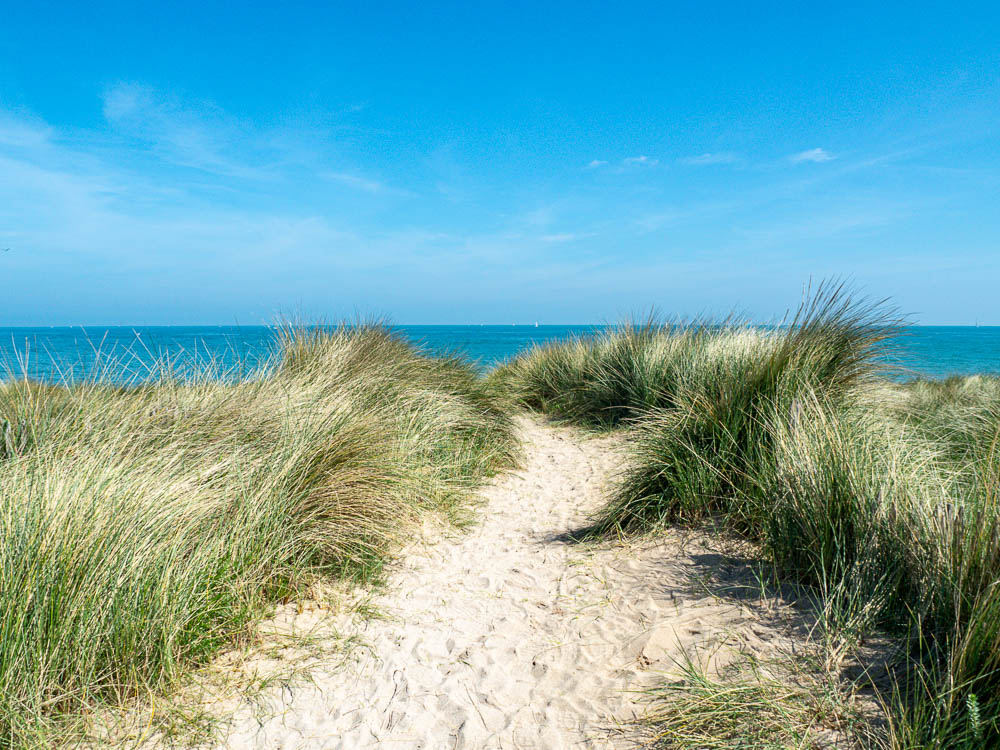
17. Field Marshal Montgomery Monument
Further up the beach, in a lovely little park of its own, is the monument to Field Marshal Bernard Montgomery (or ‘Monty’ as the monument calls him). This simple memorial pays tribute to the Commander in Chief of the Allied land forces in Normandy 1944.
This memorial stands in the town of Colleville-Montgomery, formerly known as Colleville-sur-Orner until it was renamed in his honor is June 1946.
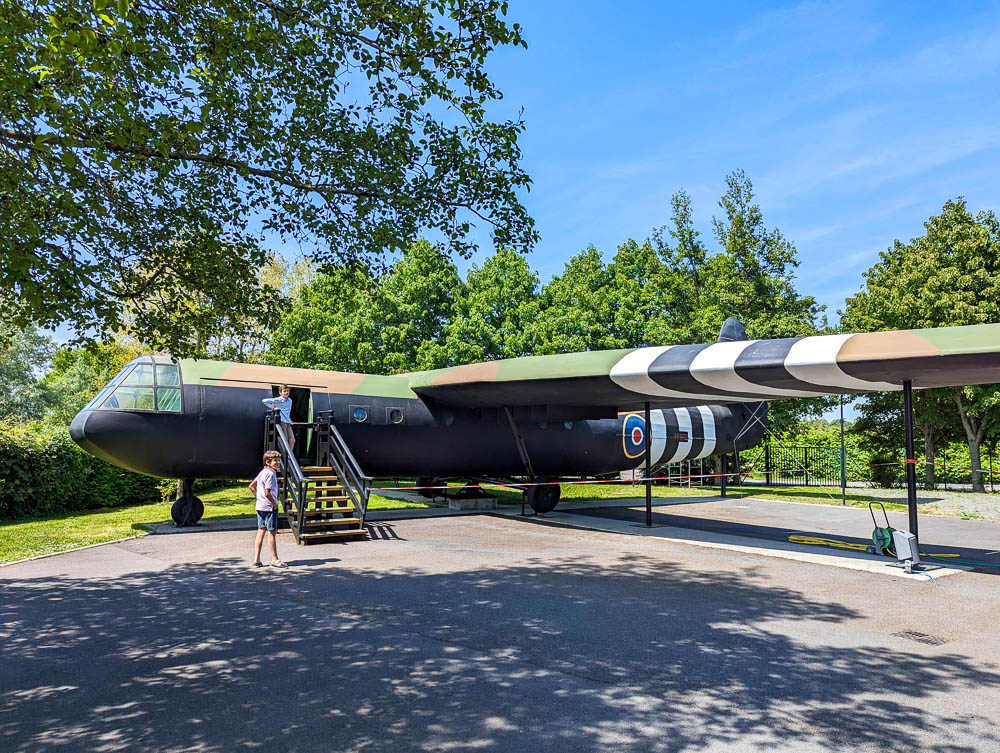
18. German bunker sites
If you’d like your list of what to see at Sword Beach to contain more German bunkers, you’re in luck. On the opposite side of the canal from the D-Day 70th anniversary memorial is an entire bunker complex for you to explore. While here, look for:
- Point d’appui (“support point”) STP 05 (R504)
- Bunkers Vault de Adam
- Point d’appui STP 05 (R506C)
- Ruine einer Kassamatte der Merville Batterie
- Redoute de Merville (dite de Vauban)
- Point d’appui STP 05 (VF/MG)
Pro tip: There’s one main parking lot from which you can reach all of these sites on foot. I’ve marked it and all these historical spots on the map at the top of this page.
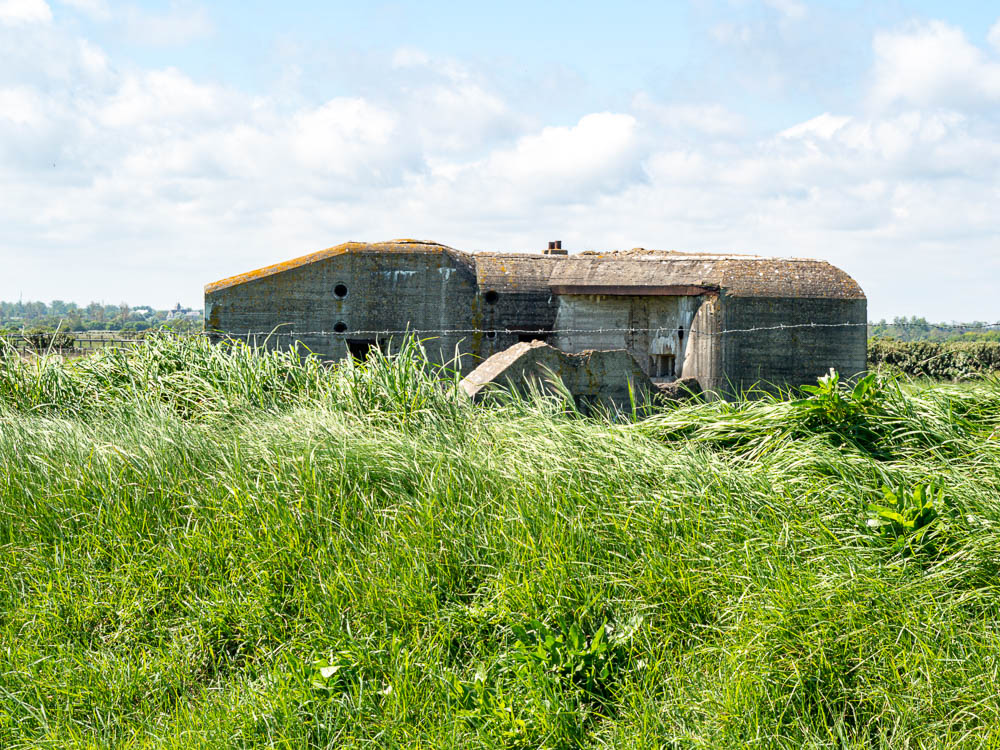
Visiting Sword Beach, Normandy today
Visiting Sword Beach Normandy today is a great way to learn about British contributions to the D-Day landings (and beyond). There are several notable museums and other sites here, and you could dedicate an entire day to just this sector. (I did!) Don’t miss a stop near Sword Beach on your next trip to World War II Normandy.
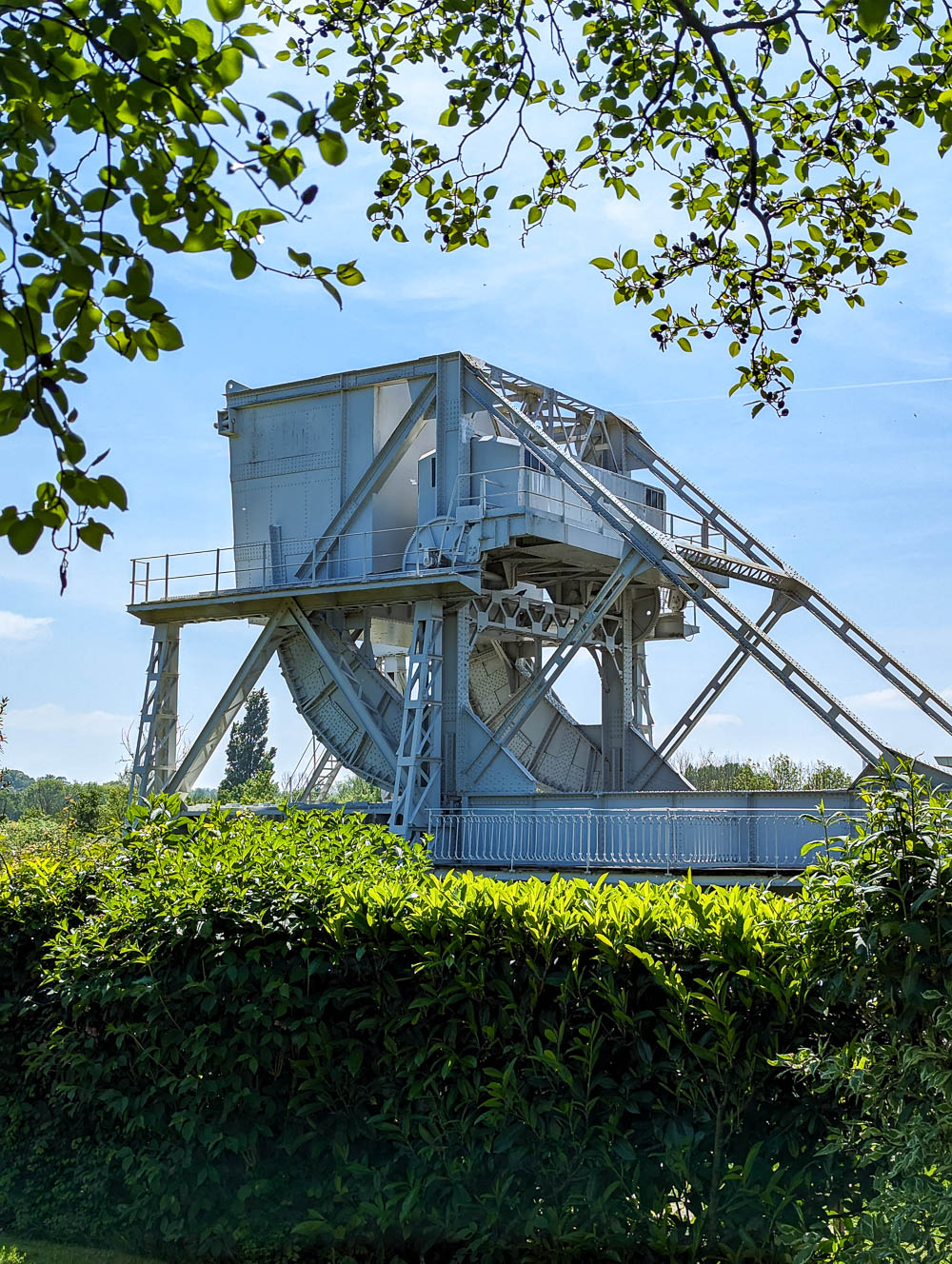
Hotels near Sword Beach, Normandy
If you’re looking to stay near Sword Beach during your visit to Normandy, check out these great options:
Hotel Le Cosy Riva Bella – Ouistreham
Hotel le Cosy Riva Bella is a lovely hotel in a great location for exploring the nearby museums and memorials. It’s well-reviewed by those who loved the comfort of the rooms, the convenient location, and the friendly, helpful staff.
It has a bar and breakfast room, an outdoor terrace, and free Wi-Fi throughout. Also, it’s one of the oldest buildings in Ouistreham and the owners have set up a photographic exhibition of the hotel’s role in the city’s history.
Book your stay here: Hotel le Cosy Riva Bella
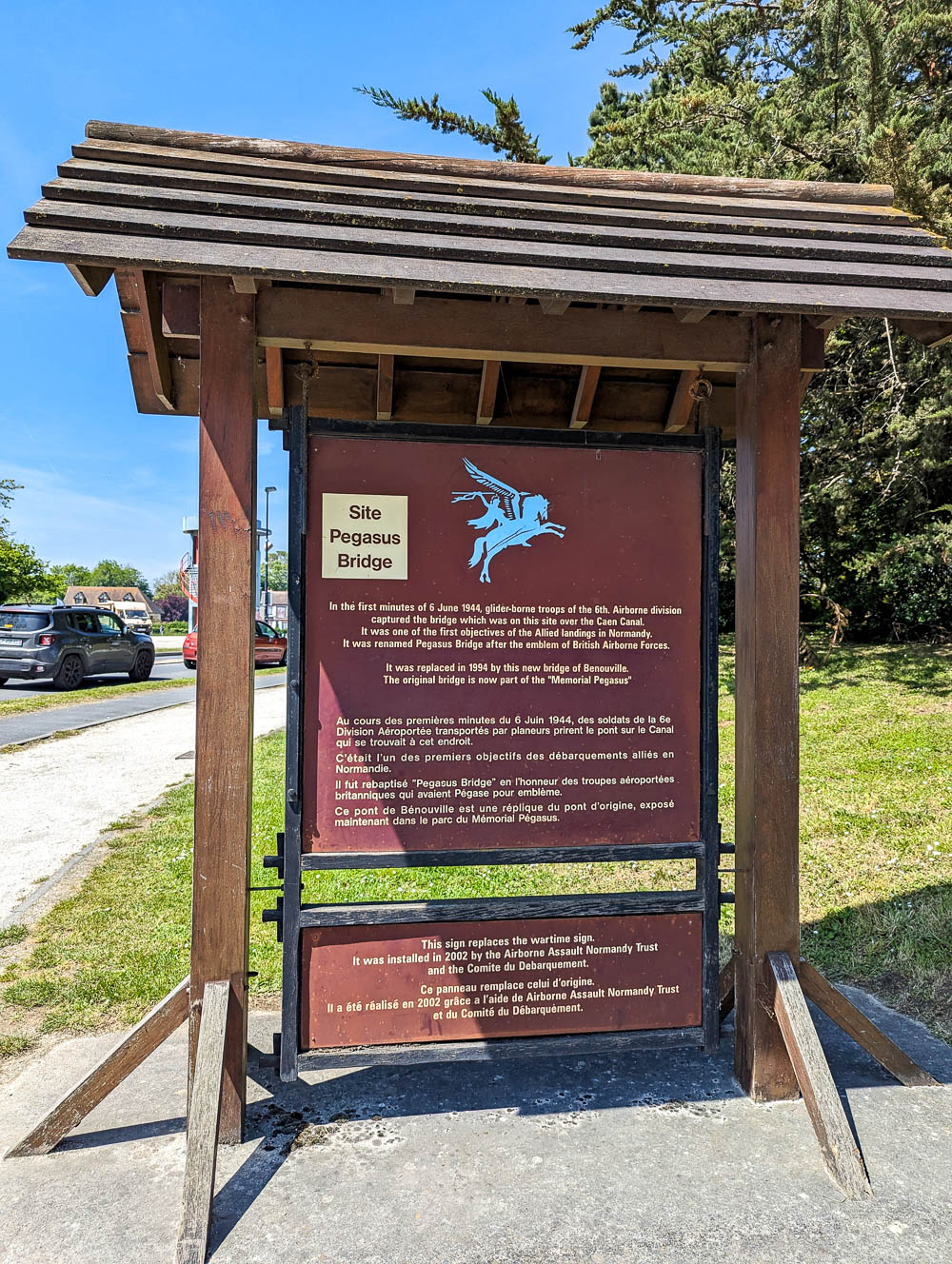
Manoir’Hastings
Located in Bénouville, Manoir’Hastings is another beautiful property just a half mile from the Pegasus Bridge. It offers free private parking, a restaurant, garden views, a terrace, and free Wi-Fi.
Reviewers absolutely love how spacious this hotel and its rooms are, as well as the superb food offerings, friendly staff, and quiet location. Many found this to be a fantastic base for exploring the nearby D-Day sites.
Book your stay here: Manoir’Hastings
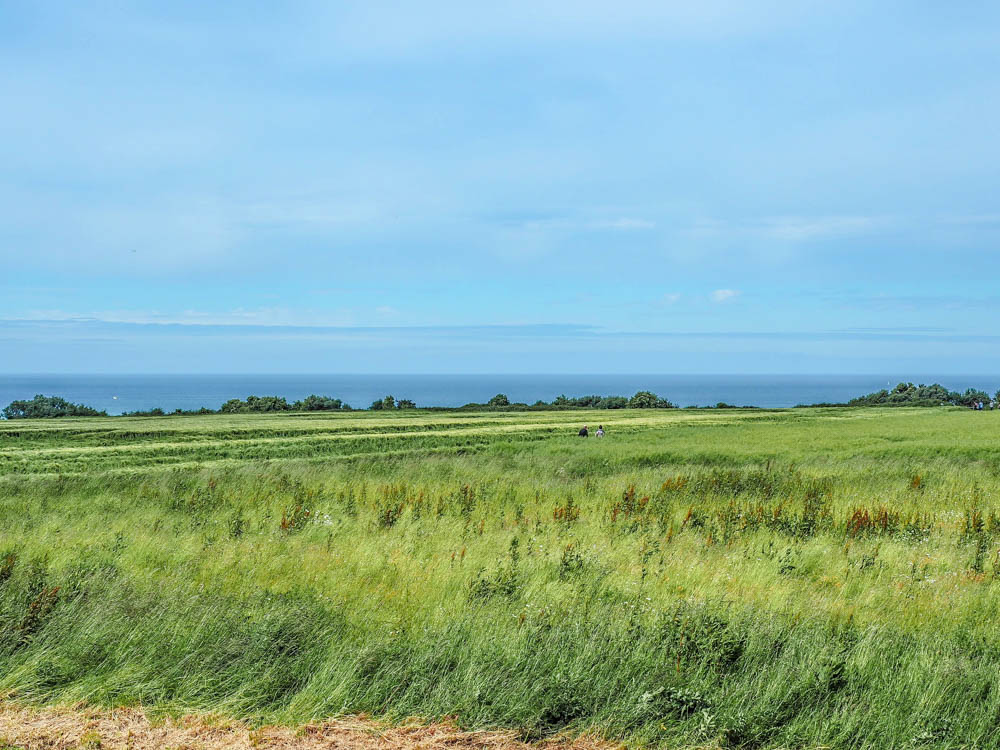
More info for your visit to Sword Beach, Normandy
- Want more hotel options? Check out Sword Beach hotels on Booking.com. (Expedia and Hotels.com often have good deals too.) VRBO is best for rental properties.
- Need a rental car? Check out the best local deals here.
- Travel planning: Pick up a Normandy guidebook and this super helpful France customs and culture guide.
- For Normandy tours: Check out the best local options and the best day tours from Paris here.
- Be sure to watch Saving Private Ryan, The Longest Day, and Band of Brothers before your visit!
- What else have I covered in France? Check out my France archives.
Like this post? Have questions about visiting Sword Beach? Let me know in the comments below. Have a great time in Normandy!

Save this info, pin this image:
